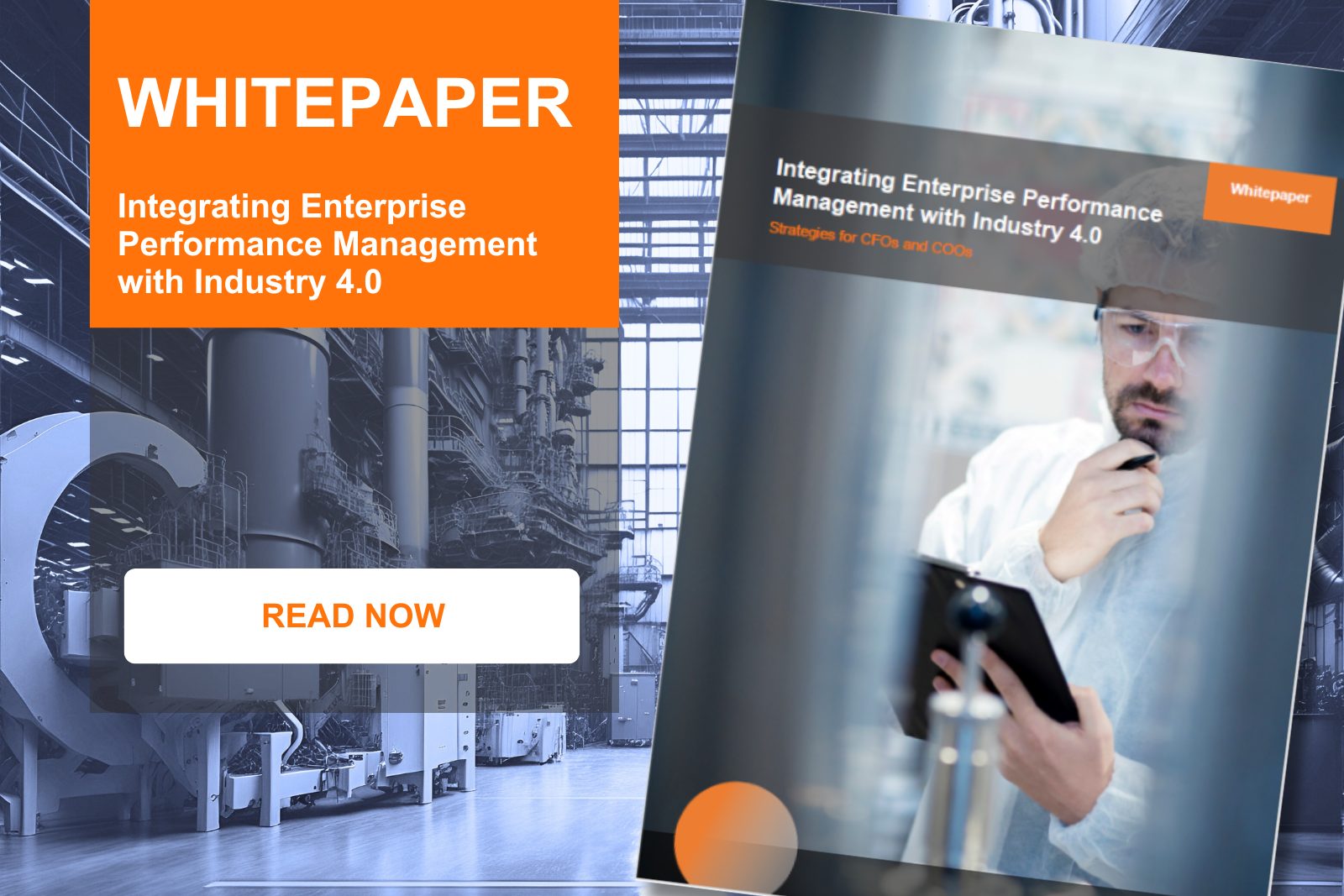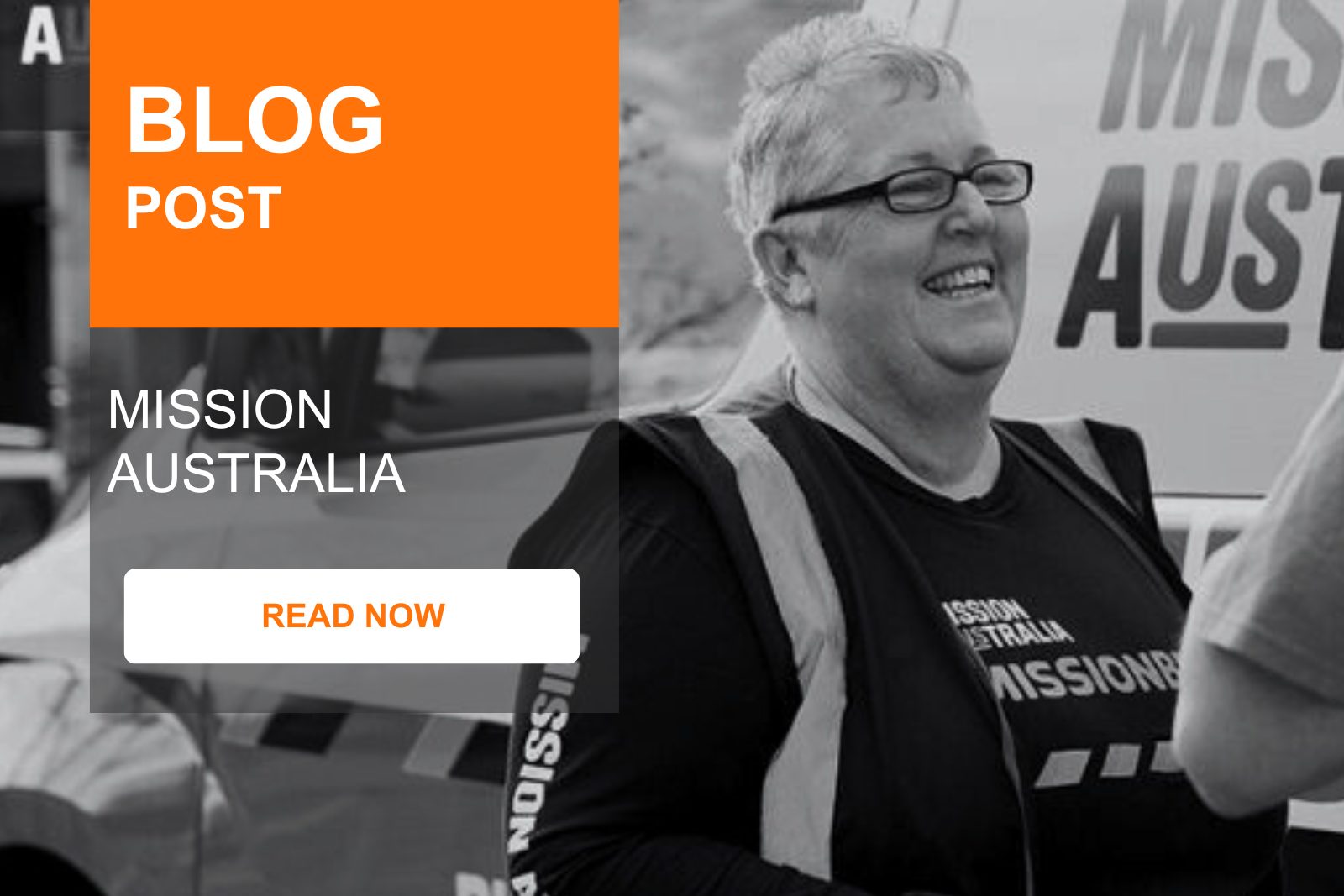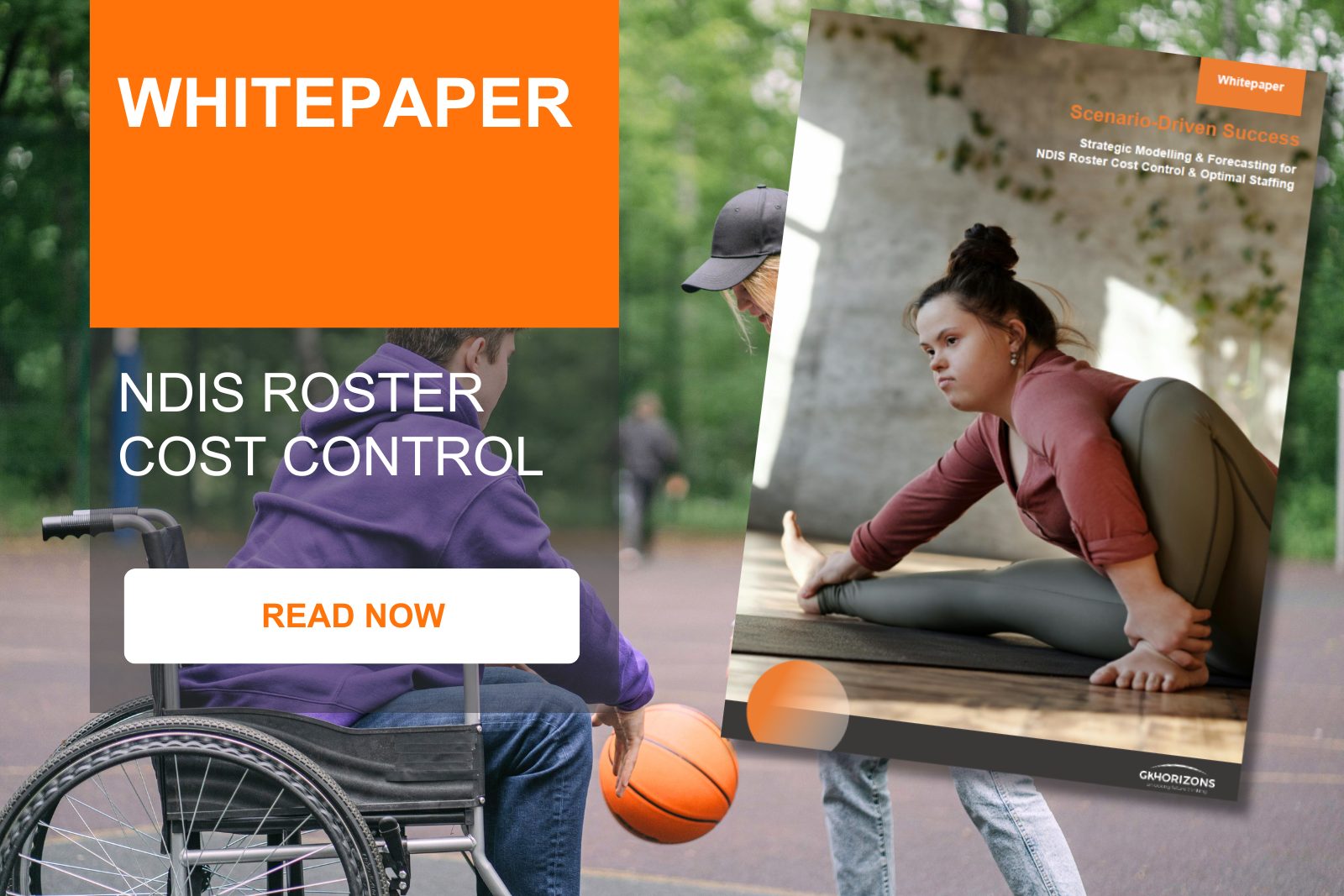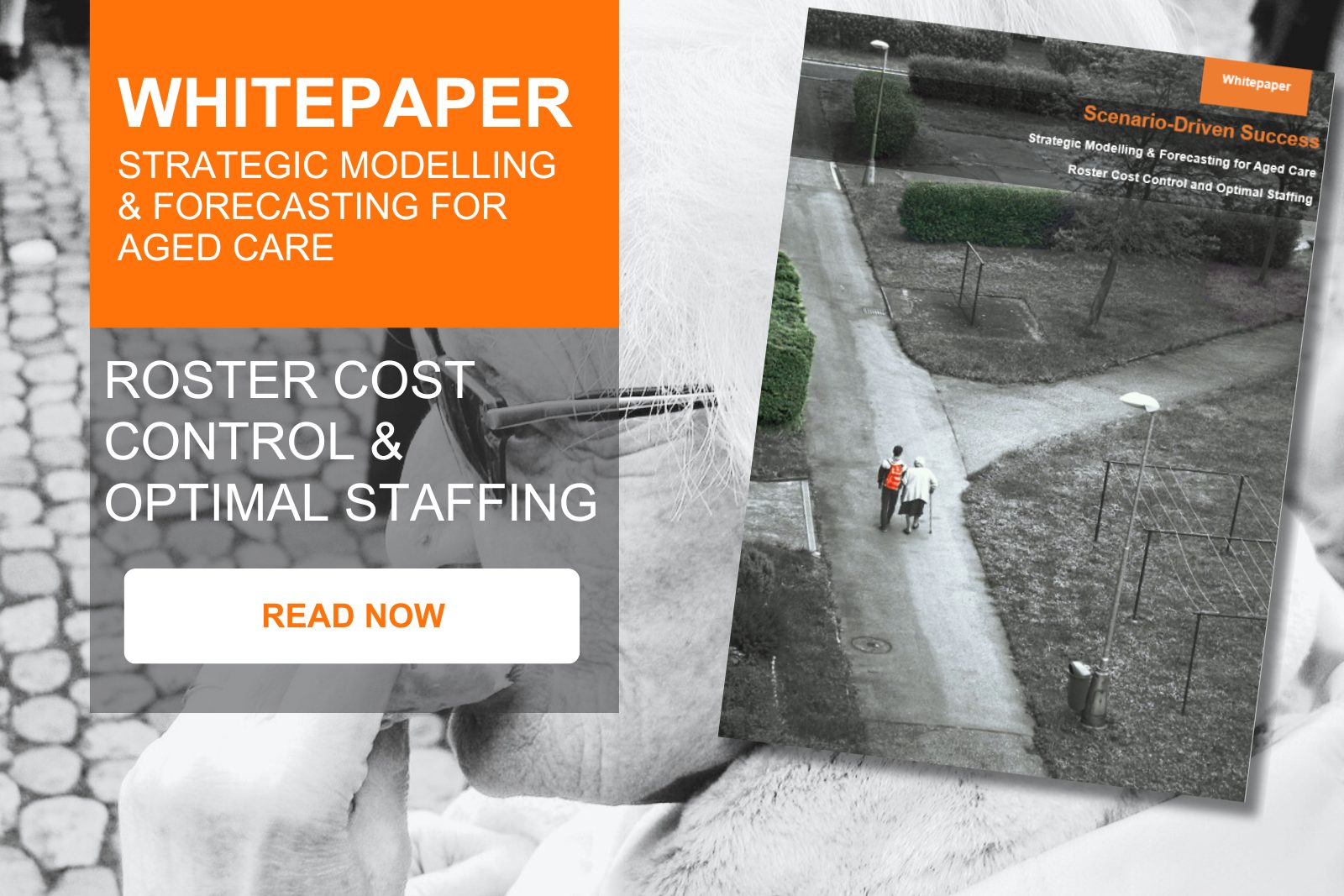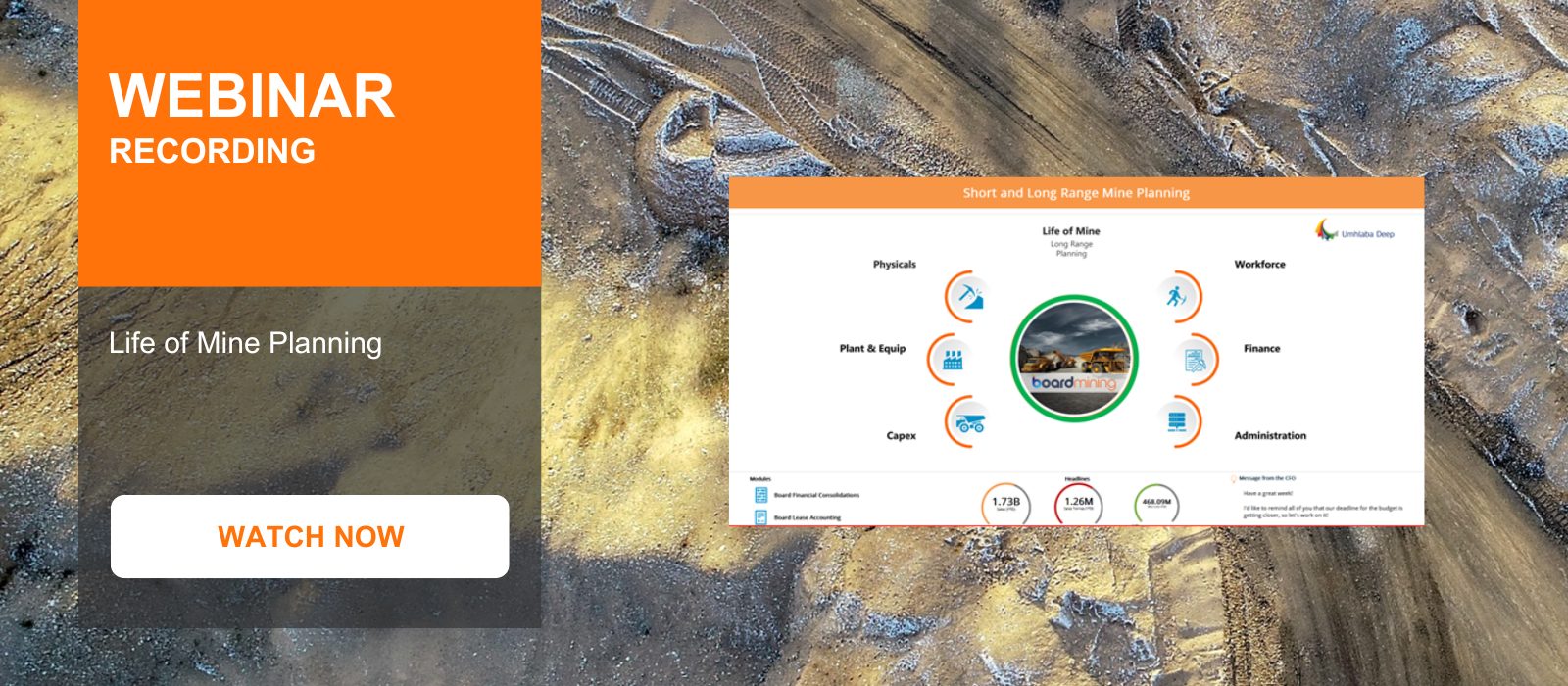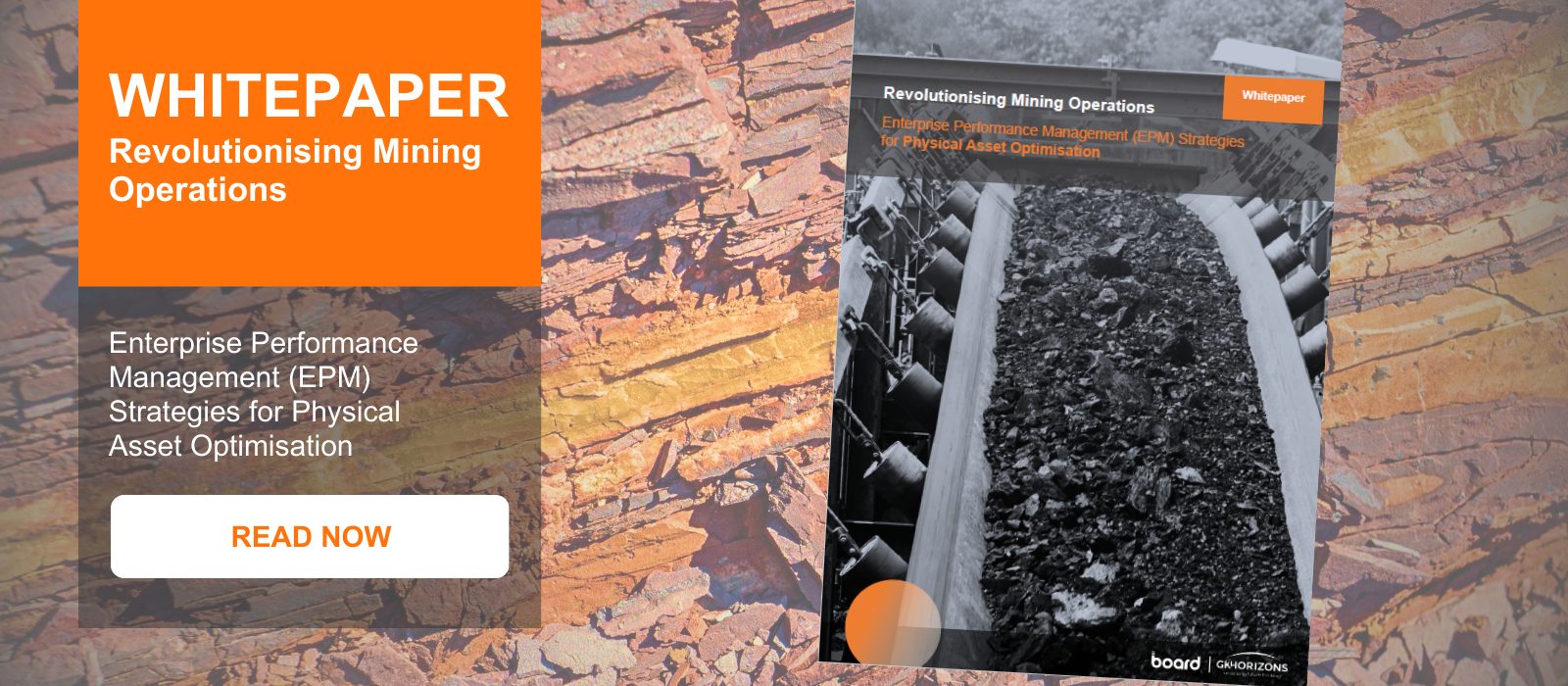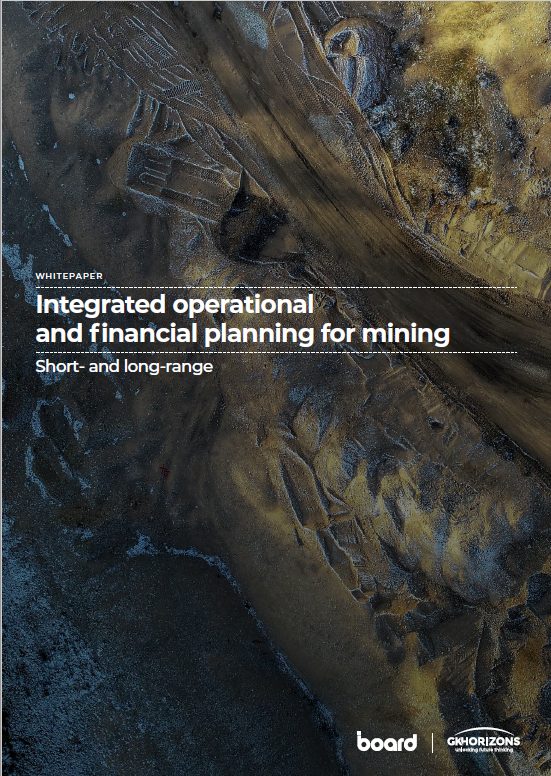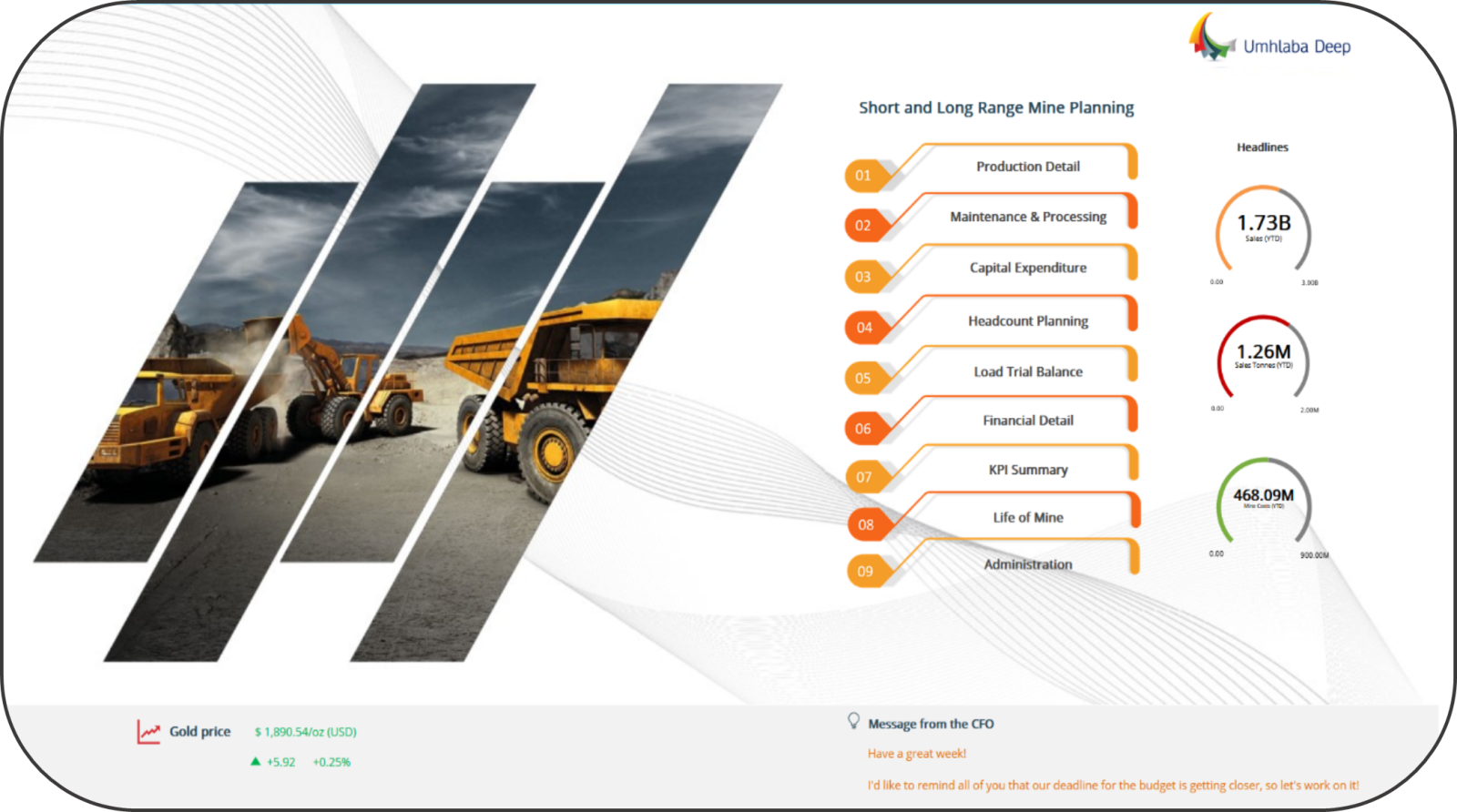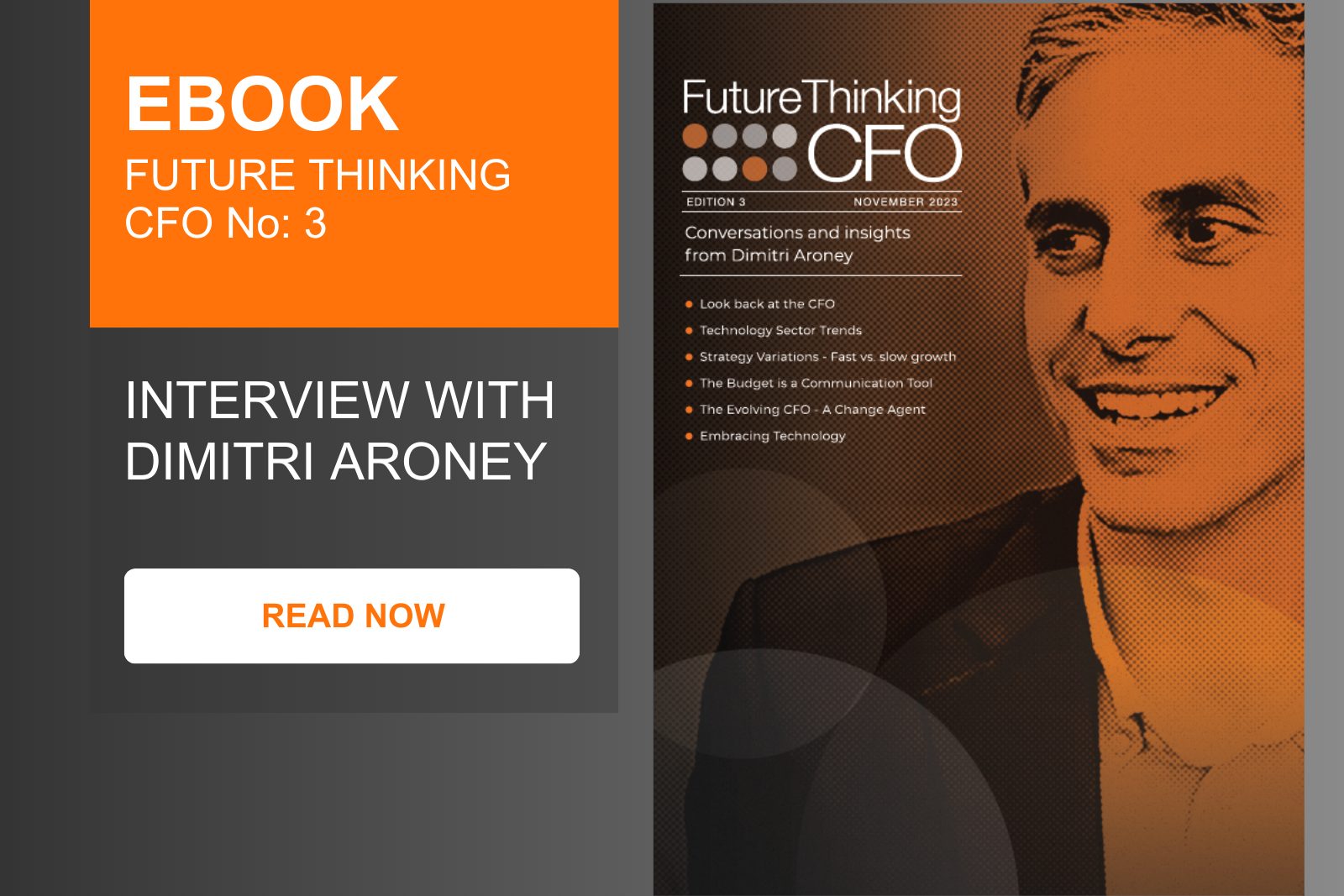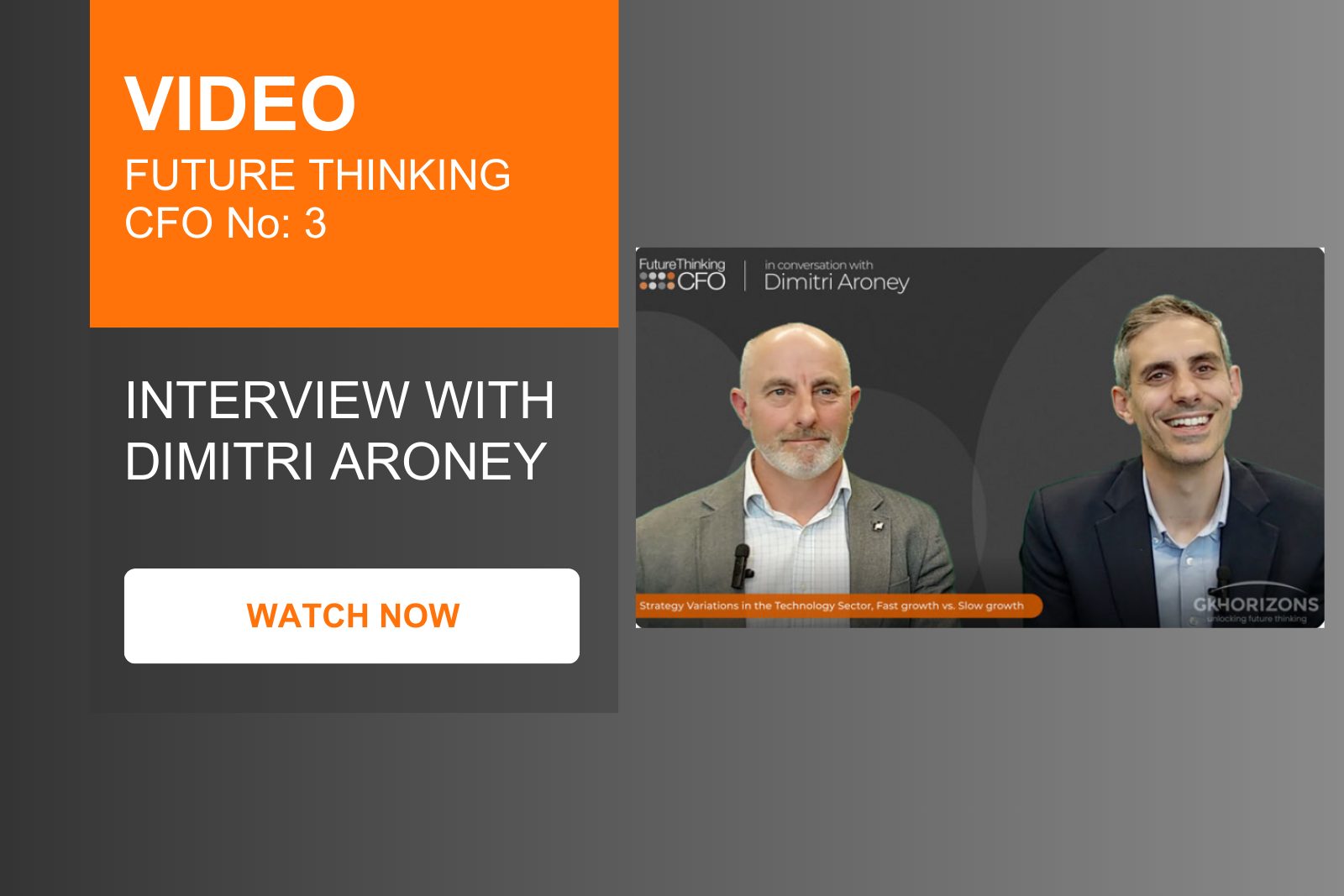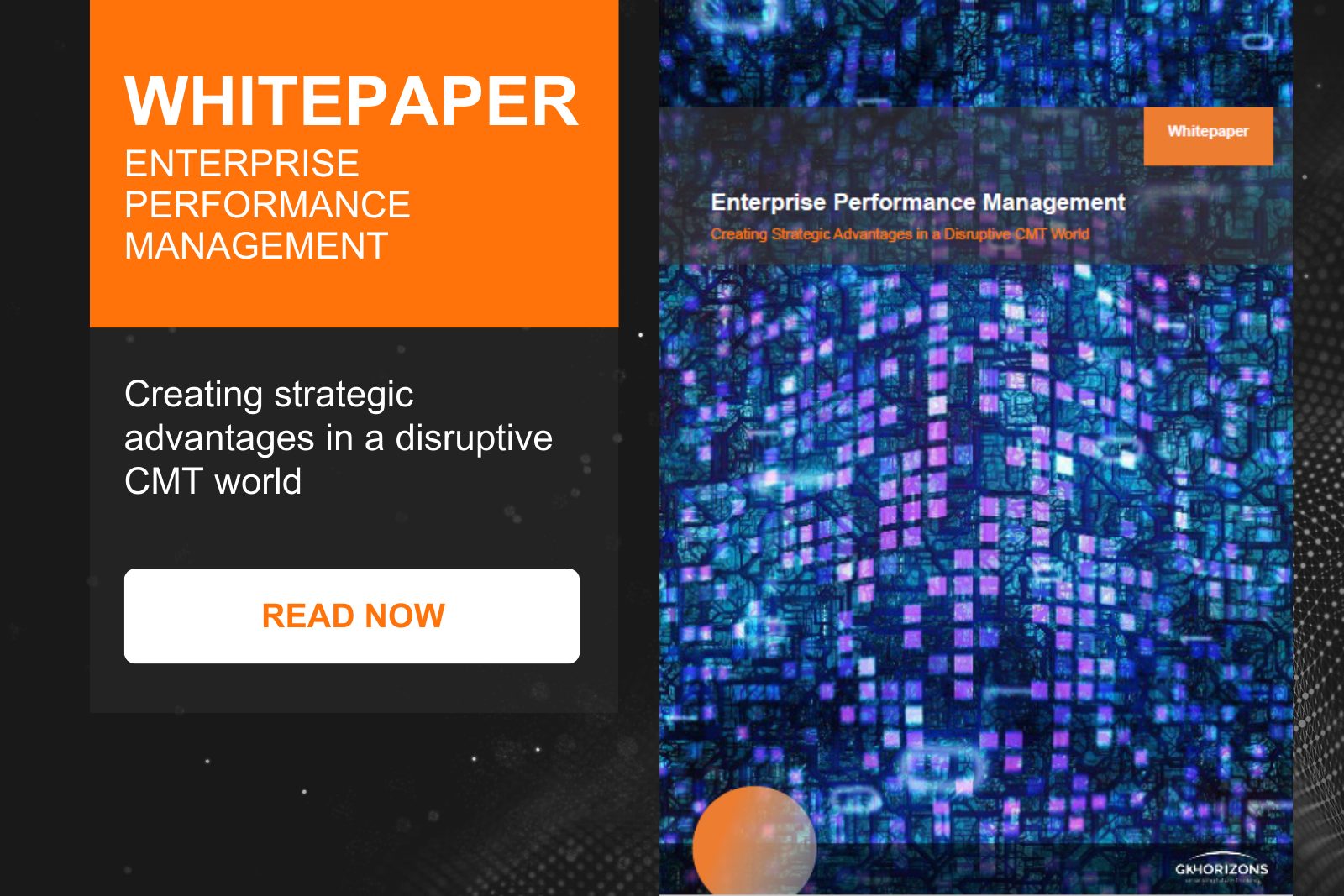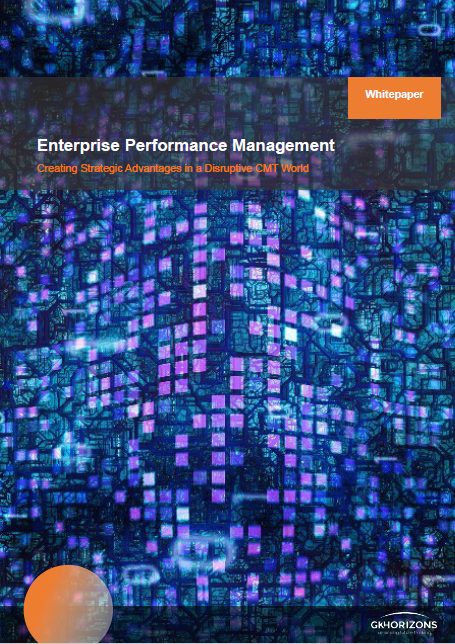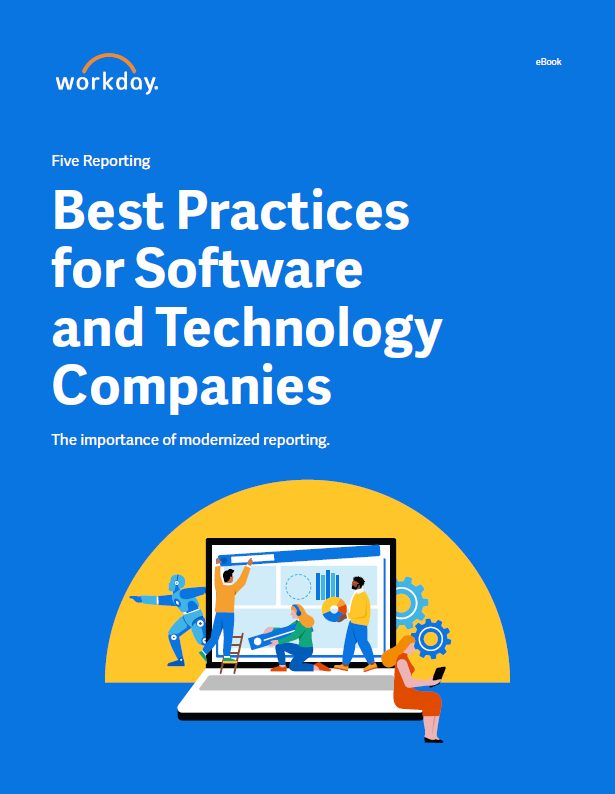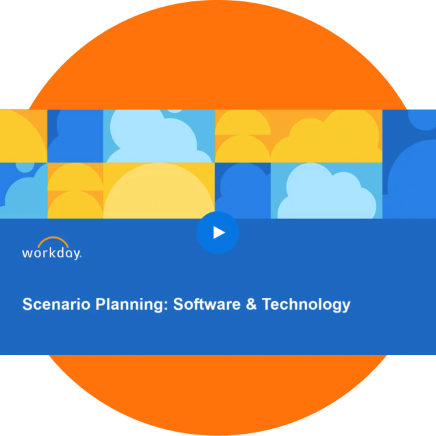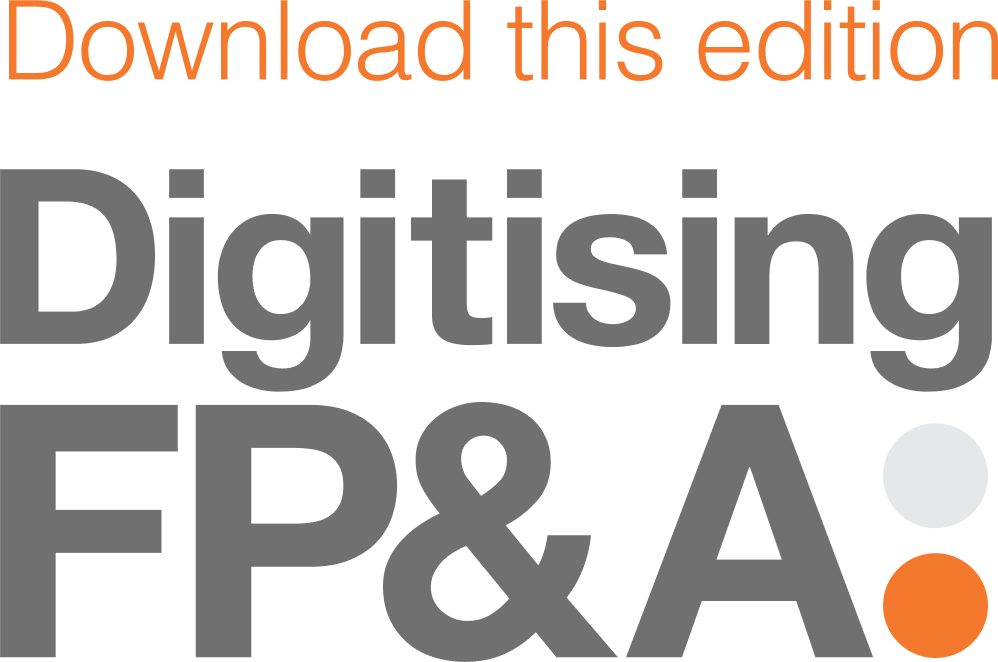Mining Services
Mining Services
Industry Overview
The mining services sector in Australia and New Zealand (ANZ) plays a pivotal role in supporting one of the region’s most prominent industries: mining. Australia, endowed with abundant natural resources, is one of the world’s leading mining nations, especially in commodities like iron ore, coal, and gold. New Zealand, though smaller in scale, has a rich mining history, especially in coal, gold, and aggregate production.
Mining services encompass a vast array of operations, from exploration, drilling, and mine planning to logistics, maintenance, and environmental rehabilitation. Companies in this sector offer specialised equipment, technology solutions, consultancy, and operational support to ensure the efficient functioning of mining operations.
Digitalisation, automation, and other technological advancements are reshaping the mining services industry, with the adoption of advanced equipment and analytic tools enhancing operational efficiencies, safety, and sustainability. Australian firms have been at the forefront of integrating innovative technologies like autonomous vehicles and drones into mining operations.
Environmental concerns and Indigenous rights have become focal points for the mining services sector. As a result, companies are increasingly investing in sustainable practices and collaborating with Indigenous communities to ensure that traditional landowners benefit from mining activities.
Despite challenges such as fluctuating commodity prices, regulatory changes, and labour shortages, the ANZ mining services industry has ample opportunities, especially in emerging markets, diversification into renewables, and the continuous drive for efficiency through technology.
Mining Services Industry Challenges:
In the intricate and ever-evolving landscape of the mining sector, service providers stand as pivotal players, bridging the gap between raw resource extraction and end-product delivery. Operating in Australia’s rich mineral environment, these companies are not merely facilitators but key stakeholders, navigating a myriad of challenges unique to their role in the industry. Economic fluctuations, rapidly advancing technology, environmental mandates, and evolving community expectations all converge to create a complex web of hurdles. Each challenge carries its own weight and demands specific strategies for effective management.
Some of the challenges include:
- Fluctuating Commodity Prices
- Regulatory Changes
- Labour Shortages
- Environmental Concerns/ESG
- Technological Integration
- Community Relations
- Global Competition
- Infrastructure Limitations
- Operational Efficiency
- Safety Concerns
Fluctuating Commodity Prices: The unpredictable nature of commodity prices can impact profitability and planning. Mining service companies are indirectly affected by these fluctuations:
- Demand for Services – When commodity prices are high, mining companies might ramp up production, leading to an increased demand for mining services. Conversely, in a downturn, they might cut back, leading to reduced demand for services.
- Payment and Contractual Issues – Mining companies facing financial strains due to low commodity prices might delay payments, renegotiate contracts, or default on service agreements.
- Investment in New Technologies – A buoyant market with high commodity prices might see mining companies more willing to invest in new technologies and services, providing opportunities for service providers to introduce innovative solutions.
- Project Delays or Cancellations – Mining projects that aren’t economically viable due to low commodity prices might be postponed or cancelled, affecting the projected revenue of service companies.
- Long-term Planning – Mining service companies need to forecast demand and align their offerings accordingly. Fluctuating prices can make this forecasting challenging.
- Budgeting and Forecasting – Volatile prices make financial projections challenging, leading to potential inaccuracies in budgeting.
- Investment Decisions – Uncertainty in prices can affect decisions on capital expenditure, new projects, or technological investments.
- Cash Flow Management – Rapid shifts in commodity values can lead to cash flow constraints, impacting day-to-day operations.
- Stakeholder Expectations – Shareholders and investors may have changing expectations based on commodity market performance, impacting strategic decisions.
Regulatory Changes: Frequent alterations in mining regulations can disrupt operations and increase compliance costs.
- Permitting Delays – New regulations can lengthen the time it takes for mining projects to receive necessary permits, leading to potential operational setbacks.
- Environmental Mandates – Stricter environmental regulations may require service companies to invest in new technologies or practices to meet updated standards.
- Safety Protocols – Changes in safety regulations could necessitate training and equipment updates, leading to increased costs and adjustments in operations.
- Land Rights and Access – Alterations to land rights and access regulations can impact where and how mining operations and their service providers can operate, potentially restricting growth opportunities.
- Financial Reporting – Modifications in financial or operational reporting requirements can mean additional administrative work and potential system overhauls.
- International Implications – For mining service companies operating globally, keeping up with regulatory changes in multiple jurisdictions becomes an added layer of complexity.
- Reputation and Compliance – Failure to adhere to new regulations can lead to penalties, damage to reputation, and strained relations with stakeholders.
Labour Shortages: Difficulty in attracting and retaining skilled workforce, particularly in remote locations.
- Training Costs – A constant need to train new employees due to turnover can inflate operational expenses.
- Competitive Salaries – The need to offer attractive compensation packages to draw talent, especially in isolated regions.
- Recruitment Challenges – Limited availability of skilled professionals in the sector might necessitate global searches.
- Workplace Culture – Creating an enticing work environment to reduce attrition rates.
Environmental Concerns: Growing emphasis on sustainable practices puts pressure on operations and increases compliance requirements. Environmental, Social, and Governance (ESG) factors have become a focal point for many industries, including mining services.
- Carbon Footprint – Implementing practices to monitor, reduce, and report greenhouse gas emissions in line with environmental standards.
- Resource Management – Sustainable usage of water, land, and other resources to minimise the environmental impact.
- Waste & Pollution Control – Systems and technologies to manage and reduce waste, effluents, and pollutants.
- Biodiversity Conservation – Efforts to protect local fauna and flora, especially in ecologically sensitive mining areas.
- Social Impact Assessments – Evaluating and addressing the social ramifications of mining operations, including community displacement and socio-economic effects.
- Stakeholder Engagement – Regular dialogue with communities, investors, and other stakeholders to align mining practices with their concerns and aspirations.
- Governance Practices – Ensuring transparency, ethical operations, and compliance with regulations, coupled with an accountable management structure.
- Rehabilitation & Closure – Preplanned efforts for post-mining restoration, ensuring a positive long-term legacy for communities and the environment.
Technological Integration: Rapid advances in technology require consistent investment and adaptation.
- Upgradation Costs – The financial burden of updating and integrating new systems.
- Training Needs – Keeping staff abreast of the latest tools and software.
- Interoperability – Ensuring different systems and technologies work seamlessly together.
- Research & Innovation – Investing in R&D to stay competitive.
Community Relations: Ensuring harmonious relations with local communities, especially Indigenous populations.
- Engagement Programs – Initiatives to involve locals in decision-making and benefits.
- Cultural Sensitivity – Understanding and respecting Indigenous traditions and rights.
- Conflict Resolution – Mechanisms to address and resolve community grievances.
- Educational Initiatives – Programs to inform communities about mining impacts and benefits.
Global Competition: Intensified competition from international players can erode market share.
- Market Analysis – Regularly assessing global market trends and competitor activities.
- Brand Positioning – Strategising to distinguish from international competitors.
- Innovation & R&D – Staying ahead with technological and operational advancements.
- Diversification – Exploring new markets and offerings to spread risk.
Infrastructure Limitations –Inadequate or ageing infrastructure can limit operations and increase costs.
- Maintenance Costs – Regular upkeep and repair of older infrastructure.
- Logistical Challenges – Inefficient infrastructure can hinder transportation and logistics.
- Capital Investment – The financial burden of modernising or expanding infrastructure.
- Regulatory Hurdles – Navigating permissions and regulations for infrastructure upgrades.
Operational Efficiency: Continuous pressure to improve efficiency and reduce costs in the face of competition.
- Process Optimisation – Constantly revising and improving operational workflows.
- Technology Leverage – Using technology to streamline and automate tasks.
- Waste Reduction – Minimising wastage of resources to improve margins.
- Performance Metrics – Regularly evaluating and setting performance benchmarks.
Safety Concerns: Mining poses inherent risks, making safety protocols and practices a constant challenge.
- Training & Drills – Regular safety training and emergency drills for staff.
- Equipment Checks – Ensuring mining equipment adheres to safety standards.
- Regulatory Compliance – Keeping up with and implementing safety regulations.
- Incident Reporting & Management – Mechanisms to report, address, and learn from safety incidents.

GK Horizons Future-Proofing Mining Services
Navigating the multifaceted landscape of the mining services sector in Australia and New Zealand demands foresight, strategy, and adaptability. Amidst challenges like fluctuating commodity prices, stringent regulations, and labour shortages, the adoption of Corporate Performance Management (CPM) and Enterprise Performance Management (EPM) platforms emerges as crucial.
These platforms offer robust capabilities including collaborative planning, what-if scenario modelling, and advanced analytics. They also enable streamlined data collection and centralisation, acting as catalysts for informed decision-making and operational excellence.
GK Horizons highlights the pathway towards leveraging these platforms. We showcase real-world use cases across various planning realms within the mining services sector, aiming to underscore the transformative potential of integrating CPM/EPM platforms for a more resilient and insight-driven operational framework.
Opportunities at a Glance
The mining services sector in Australia and New Zealand (ANZ) faces a myriad of challenges that span from fluctuating commodity prices to stringent regulatory changes. With mining being a significant contributor to the economies of both countries, the pressure to adapt and excel amidst these challenges is paramount. For instance, the ripple effects of global economic conditions often translate to volatile commodity prices, which in turn, affect the financial stability of mining services companies.
Additionally, these firms grapple with the regulatory changes that come with the growing emphasis on sustainable mining practices. This not only disrupts operations but also escalates compliance costs.
Moreover, challenges like labour shortages, particularly in remote mining locations, and the necessity for technological integration further test the resilience and adaptability of mining services firms in the ANZ region.
Some of the opportunities are:
- Enhanced Three-Way Financial Planning & Reporting
- Fluctuating Commodity Prices
- Regulatory Changes
- Labour Shortages
- Environmental Concerns/ESG
- Technological Integration
- Asset Lifecycle Management (ALM)
- Community Relations
- Global Competition
- Infrastructure Limitations
- Operational Efficiency
- Safety Concerns
- Data Collection and Centralisation
- Risk Management
- Decision Support
Enhanced Three-Way Financial Planning & Reporting:
- Instrumental not only for internal financial management but also for transparent communications with external stakeholders such as mining companies and financiers.
- Utilise CPM/EPM solutions to seamlessly integrate income statements, balance sheets, and cash flow forecasts, providing a holistic view of financial performance and position.
- Engage in collaborative planning to align operational activities with financial goals, ensuring resource allocation is optimised to meet both short-term and long-term objectives.
- Leverage advanced analytics to monitor and analyse financial performance against budgets, operational plans, and historical data, supporting proactive financial management.
- Employ real-time reporting capabilities to generate insightful financial reports, facilitating better communication with stakeholders and informed decision-making.
- Perform advanced what-if modelling to assess the potential financial implications of various operational scenarios, such as changes in commodity prices, labour costs, or regulatory compliance requirements.
- Establish a centralised financial data repository to ensure data consistency, accuracy, and accessibility, supporting effective financial planning, analysis, and reporting.
- Foster transparency and trust with mining companies by providing them with accurate, timely, and comprehensive financial reports, enabling better collaboration and mutually beneficial arrangements.
- Enhance credibility and foster stronger relationships with financiers by delivering clear, accurate, and insightful financial reports, showcasing the financial health and viability of projects, thus potentially unlocking better financing terms.
- Utilise the integrated financial planning and reporting framework to ensure compliance with various financial regulations and standards, reducing the risk of financial discrepancies and potential penalties.
Fluctuating Commodity Prices:
- Utilise what-if modelling to simulate scenarios like a 20% decrease in iron ore prices, helping in informed budgeting and risk assessment.
- Create financial models that factor in commodity price volatility, like linking project budgets directly to the market prices of gold or copper.
Regulatory Changes:
- Implement a digital compliance management system to auto-check operations against updated regulatory standards, ensuring real-time compliance.
- Develop a regulatory dashboard that tracks and displays compliance status on essential permits, reducing the risk of operational halts.
Labour Shortages:
- Utilise collaborative planning tools to efficiently schedule shifts in remote mining sites like those in Western Australia’s Pilbara region.
- Establish apprenticeship programs with local technical institutes to cultivate a skilled workforce for specialised roles like drill operators or geotechnical engineers.
Environmental Concerns/ESG:
- Employ advanced analytics to monitor emissions at coal mine sites, aiding in the reporting and reduction of greenhouse gases.
- Formulate an ESG committee to oversee water management strategies at mining sites, ensuring conservation and adherence to local environmental regulations.
Technological Integration:
- Launch training programs on new software applications for geological modelling or mine planning to ensure seamless tech adoption.
- Partner with tech vendors to develop customised mining software solutions, enhancing operational efficiency and data accuracy.
Asset Lifecycle Management (ALM):
- Utilise CPM/EPM frameworks to integrate Asset Lifecycle Management systems, providing a holistic view of asset performance, maintenance schedules, and replacement or disposal timelines.
- Apply advanced analytics within CPM/EPM solutions to optimise asset utilisation, predict maintenance requirements, and manage asset-related risks effectively.
- Enhance collaborative planning through CPM/EPM platforms by aligning asset management goals with financial planning, operational strategies, and sustainability initiatives.
- Employ what-if modelling within CPM/EPM to simulate different asset management scenarios, aiding in decision-making regarding asset investments, refurbishments, or disposals.
- Leverage real-time performance monitoring through CPM/EPM to ensure assets are operating within optimal parameters, contributing to improved operational efficiency and compliance with safety and environmental standards.
Community Relations:
- Implement stakeholder management platforms to organise community feedback and concerns regarding mining projects in sensitive areas.
- Initiate education and health projects in local communities to foster goodwill, like offering scholarships or setting up health camps.
Global Competition:
- Employ analytics to assess market trends and competitor strategies in the global iron ore market, aiding in better strategic planning.
- Form alliances with overseas mining firms to explore joint venture opportunities in new mining projects or technology exchanges.
Infrastructure Limitations:
- Utilise AI-powered predictive maintenance solutions to monitor equipment health, reducing downtime in critical mining operations.
- Invest in modern conveyor systems to streamline ore transportation, overcoming logistical challenges in remote and rugged terrains.
Operational Efficiency:
- Implement real-time monitoring systems to identify bottlenecks in ore processing units, allowing for quick resolution and reduced downtime.
- Adopt lean management practices to streamline procurement processes, reducing waste and improving operational timelines.
Safety Concerns:
- Deploy continuous monitoring systems to track safety compliance in high-risk areas like underground mining zones.
- Establish a safety training centre to provide hands-on training on emergency response and hazard identification, ensuring workers are well-prepared for onsite challenges.
Data Collection and Centralisation:
- Implement CPM/EPM solutions to establish a centralised data repository, ensuring consistent, accurate, and real-time data accessibility for informed decision-making.
- Leverage automated data collection technologies such as sensors, drones, and IoT devices to gather critical operational, environmental, and safety data from mining sites.
- Utilise advanced analytics within CPM/EPM frameworks to derive actionable insights from centralised data, supporting continuous improvement in operational efficiency, safety protocols, and environmental compliance.
- Foster collaborative planning and performance management through a centralised data platform, enabling cross-functional teams to align strategies, share insights, and monitor progress against defined objectives.
- Enhance regulatory compliance and reporting by maintaining a centralised data archive, facilitating timely and accurate reporting to regulatory bodies.
- Employ what-if modelling and scenario analysis on centralised data to assess the potential impact of various strategic initiatives, supporting better resource allocation and risk management.
Risk Management:
- Utilise CPM/EPM frameworks to develop a comprehensive risk management strategy, integrating financial, operational, and external risk assessments to ensure a holistic approach.
- Leverage advanced analytics to identify, assess, and monitor various risk factors including market volatility, regulatory changes, safety incidents, and environmental impacts.
- Employ real-time monitoring and alerting systems to promptly identify potential risks, allowing for timely intervention to mitigate negative impacts.
- Utilise what-if scenario modelling to evaluate the potential impact of various risk factors on operational and financial performance, aiding in better strategic planning and resource allocation.
- Foster a culture of risk awareness and proactive management by engaging all levels of the organisation through collaborative planning platforms, ensuring alignment on risk priorities and mitigation strategies.
- Enhance transparency and reporting of risk management practices to external stakeholders such as mining companies, financiers, and regulatory bodies, bolstering trust and compliance.
- Implement robust internal controls and compliance frameworks through CPM/EPM solutions, ensuring adherence to industry regulations and standards while mitigating financial and operational risks.
- Strengthen community relations and environmental stewardship by employing risk management strategies that prioritise safety, sustainability, and social responsibility.
Decision Support:
- Utilise CPM/EPM platforms to aggregate and centralise critical data from various operational, financial, and external sources, providing a comprehensive basis for decision-making.
- Leverage advanced analytics to derive actionable insights from data, enabling better understanding of operational performance, financial health, and market dynamics.
- Employ what-if scenario modelling to evaluate the potential outcomes of different strategic and operational decisions, aiding in the selection of optimal courses of action.
- Enhance collaborative decision-making through CPM/EPM solutions by facilitating cross-functional dialogue, consensus-building, and alignment on key decisions.
- Utilise real-time monitoring and alerting capabilities to provide decision-makers with timely and accurate information, enabling rapid response to emerging opportunities or threats.
- Foster greater transparency and trust with external stakeholders such as mining companies and financiers by providing them with clear, insightful, and data-driven decision support documentation.
- Implement robust performance management frameworks to continuously monitor and evaluate the impact of decisions, supporting continuous improvement and learning.
- Strengthen the capability to comply with regulatory requirements and adapt to regulatory changes by leveraging decision support systems to evaluate compliance scenarios and develop compliant strategies
EPM & CPM Use Cases Examples in Mining Services
In the Mining Services sector, adept planning and data-informed decision-making are crucial for navigating the complex, often volatile, industry landscape. Our use case examples shed light on the tangible benefits of integrating Corporate Performance Management (CPM) and Enterprise Performance Management (EPM) solutions across various management domains within this sector. Delve into real-world applications and observe how CPM and EPM optimise operational, financial, and strategic dimensions in mining services settings.
Use Case examples include:
Use Case Description: In the mining services industry, adept financial planning is pivotal for navigating the intricate web of fiscal management. By embracing CPM and EPM platforms, mining services firms ensure robustness in their financial operations and achieve their strategic financial goals. 3-way planning, which harmoniously integrates profit and loss (P&L) projections, balance sheets, and cash flow statements, offers an added layer of depth and precision to this process. Below, we explore various financial planning sub-use cases, highlighting the added advantages of incorporating 3-way planning via CPM/EPM platforms.
Sub Use Cases:
- Financial Planning and Analysis (FP&A): At the core of financial planning, FP&A involves budgeting, forecasting, and analysing financial data to guide essential business decisions. With CPM/EPM platforms, FP&A’s efficiency is heightened through real-time data analysis. When enriched with 3-way planning, it provides a fuller financial picture, allowing for accurate and responsive financial planning to meet fluctuating commodity prices and market demands.
- Budgeting and Forecasting: Budgeting and forecasting guide a mining services organisation’s financial direction. These critical processes, when supported by CPM/EPM platforms, facilitate data-driven budget formulations and forecasts that align with strategic objectives. Integrating 3-way planning here ensures a more comprehensive overview, aiding financial stability in the face of volatile market scenarios.
- Cash Flow Management: Crucial for maintaining liquidity and ensuring the ongoing viability of operations, cash flow management becomes even more refined when the insights from 3-way planning are incorporated. Leveraging CPM/EPM platforms provides detailed monitoring and management of cash flows, crucial for navigating the industry’s cyclical dynamics.
- Capital Expenditure (CapEx) Planning: For substantial investments, such as procuring new mining equipment or adopting novel technology, CapEx planning is paramount. CPM/EPM platforms streamline this by facilitating a thorough analysis and scenario planning for capital investments. When 3-way planning insights are integrated, it aligns capital decisions more closely with overall financial strategies and capabilities.
- Tax Planning and Compliance: In the heavily regulated mining sector, managing tax obligations is vital. CPM/EPM platforms ensure proficient tax planning, safeguarding against potential fiscal liabilities. With the added depth from 3-way planning, firms can ensure a more harmonised alignment between tax strategies and broader financial health.
- Financial Reporting and Consolidation: Collating financial data through reporting and consolidation is significantly enhanced with CPM/EPM platforms. The inclusion of 3-way planning insights ensures a more comprehensive financial report, fostering transparency and equipping stakeholders with richer data for informed decision-making.
Use Case Description: Operational planning in the mining services industry is vital for project efficiency and profitability. CPM and EPM platforms are instrumental in optimising operations, resource allocation, and project timelines. The following sub-use cases delve into the specifics:
Sub Use Cases:
- Asset Lifecycle Management: By employing CPM/EPM platforms, mining services organisations can effectively plan the lifecycle of mining equipment, ensuring timely maintenance to reduce downtime, extend equipment lifespan and optimise operational costs.
- Resource Allocation and Utilisation: Effective resource allocation for skilled labor and machinery through CPM/EPM platforms can significantly mitigate project delays, improving overall project efficiency and profitability.
- Supply Chain Management: With these platforms, monitoring supply chain activities for critical materials and components becomes streamlined, helping to maintain inventory levels and ensuring timely availability of resources.
- Production Planning: Real-time data analytics provided by CPM/EPM platforms enable better planning of drilling, blasting, and materials handling schedules to meet production targets efficiently.
Use Case Description: In the mining services industry, strategic planning encompasses long-term vision and scenario planning to navigate through market volatilities and regulatory changes. The following sub-use cases highlight the benefits:
Sub Use Cases:
- Market Analysis and Expansion Planning: Through scenario planning facilitated by CPM/EPM platforms, companies can better gauge market demand for minerals and strategically plan expansions into new geographic or mineral markets.
- Technology Integration Planning: Planning for the integration of automation and other advanced technologies in mining operations through CPM/EPM platforms can significantly enhance productivity and safety standards.
- Sustainability and ESG Planning: CPM/EPM platforms aid in tracking and reporting on ESG metrics, enabling better planning towards achieving sustainability goals amidst the growing emphasis on environmentally friendly mining practices.
Use Case Description: The dynamics of workforce planning in mining services are crucial for project success and safety. Here’s how CPM/EPM platforms can be utilised:
Sub Use Cases:
- Recruitment and Retention Planning: CPM/EPM platforms can aid in analysing workforce turnover rates and planning recruitment drives to ensure a steady supply of skilled labour, particularly during project ramp-ups.
- Training and Development Planning: These platforms support planning and monitoring of training programs, ensuring workers are adept at handling new mining technologies and adhering to safety protocols.
- Workforce Allocation: Effective scheduling and allocation of workforce across various mining sites through CPM/EPM platforms ensure projects stay on schedule and within budget.
Use Case Description: Compliance and risk management are pivotal in the mining services sector. Here are specific examples of how CPM/EPM platforms can be employed:
Sub Use Cases:
- Regulatory Compliance Management: Employing CPM/EPM platforms to track regulatory compliance in real-time ensures adherence to mining safety standards and environmental regulations, reducing the risk of non-compliance penalties.
- Risk Assessment and Mitigation Planning: CPM/EPM platforms enable thorough risk assessments, be it for operational, financial, or environmental risks, and facilitate the formulation of robust risk mitigation strategies.
- Audit and Reporting: Streamlined audit trails and reporting facilitated by CPM/EPM platforms ensure transparent communication with stakeholders and regulatory bodies, which is crucial for maintaining trust and compliance in the mining services sector.
Use Case Description: In the mining services industry, project management is crucial for timely deliverables and cost control. Here’s how CPM/EPM platforms can be utilised:
Sub Use Cases:
- Project Scheduling and Monitoring: Utilising CPM/EPM platforms can lead to better scheduling, monitoring, and control of project timelines, ensuring milestones are achieved on time and within budget.
- Cost Estimation and Control: Accurate cost estimations and real-time cost control are facilitated through CPM/EPM platforms, which are essential for maintaining project profitability and client satisfaction.
- Contract Management: Managing contracts with mining companies, suppliers, and other stakeholders becomes streamlined with CPM/EPM platforms, ensuring compliance and reducing legal risks.
Use Case Description: Ensuring safety and minimizing environmental impact are paramount concerns in the mining services industry. Here’s how CPM/EPM platforms can help:
Sub Use Cases:
- Safety Protocol Planning and Monitoring: Using CPM/EPM platforms to plan, implement, and monitor safety protocols helps in reducing workplace accidents and ensuring adherence to safety regulations.
- Environmental Impact Assessment: These platforms facilitate continuous monitoring and assessment of environmental impact, aiding in better planning and compliance with environmental regulations.
- Emergency Response Planning: CPM/EPM platforms support thorough planning and real-time monitoring for emergency response, ensuring preparedness in case of unforeseen events like accidents or natural disasters.
Use Case Description: Ensuring the quality of services and operations is vital for client satisfaction and regulatory compliance. Here are specific examples of how CPM/EPM platforms can be employed:
Sub Use Cases:
- Quality Control and Assurance: Implementing and monitoring quality control procedures through CPM/EPM platforms help ensure services meet industry standards and client expectations.
- Continuous Improvement: Using data analytics and performance metrics available through CPM/EPM platforms to identify areas for improvement, fostering a culture of continuous improvement in operational and service quality.
- Client Feedback and Performance Monitoring: Collecting and analysing client feedback through CPM/EPM platforms provide valuable insights for enhancing service quality and client satisfaction.
Manufacturing
Manufacturing
Industry Overview
The manufacturing industry in Australia and New Zealand (ANZ) has historically been a cornerstone of the region’s economic landscape, encompassing a diverse range of sectors. Particularly noteworthy is the food and beverage manufacturing sub-sector, which has capitalised on ANZ’s rich agricultural resources and diverse culinary heritage. Australian and New Zealand producers are globally recognised for their high-quality wines, dairy products, meats, and unique local offerings. This emphasis on clean, green, and sustainable production practices has boosted the appeal of ANZ food products in the international arena.
Simultaneously, the broader manufacturing sector has seen evolutions from traditional heavy industries to technologically advanced fields like aerospace and medical devices. Investments in research, development, and innovation, coupled with proximity to growing Asia-Pacific markets, have positioned ANZ manufacturers favourably, driving a shift towards value-added manufacturing and sustainable, future-proof industry practices.
Industry Challenges at a Glance:
The world of manufacturing is in a state of constant flux, shaped by both traditional barriers and emerging obstacles. As manufacturers navigate through tough global competition, there’s also an added pressure to embrace and integrate the latest technological innovations. These challenges not only test the resilience and adaptability of businesses but also highlight the need for forward-thinking and strategic planning.
Below are some of the challenges being faced:
- Global Competition
- Supply Chain Disruptions
- Technological Upgrades
- ESG (Environmental, Social, and Governance) Considerations
- Skills Gap
- Regulatory and Compliance Issues
- Capital Intensity
- Fluctuating Demand
- Intellectual Property (IP) Protection
- Customisation and Personalisation
- Energy Costs
- Quality Control and Assurance
- Digital Transformation
- Political and Economic Instabilities
- Shift to Circular Economy
- Health and Safety
- Global Competition
In today’s globalised market, Aussie manufacturers are not only competing locally but also with overseas entities, particularly from regions with lower operating costs. This intense competition requires them to persistently innovate, manage costs, and find unique value propositions to maintain a competitive edge. - Supply Chain Disruptions
Events such as global pandemics or geopolitical conflicts have spotlighted the vulnerabilities in supply chains. It’s imperative for manufacturers to build resilient and diversified supply chains that can swiftly pivot in response to unforeseen disruptions. - Technological Upgrades
The technological landscape is evolving rapidly. This change demands manufacturers to constantly integrate the latest tech, which in turn requires significant investments and ongoing training to ensure their workforce stays up-to-date. - ESG (Environmental, Social, and Governance) Considerations
ESG is now front and centre for ANZ manufacturers. Beyond mere compliance, it’s about championing environmental efforts, upholding social responsibilities, and demonstrating transparent governance. The challenge lies in intertwining these values with business growth and innovation. - Skills Gap
As manufacturing processes and technologies advance, there’s a growing gap between the required skills and the available workforce expertise. This divergence, particularly in advanced areas, calls for concerted upskilling and recruitment efforts. - Regulatory and Compliance Issues
Navigating the maze of both local and global regulations is no easy feat. Manufacturers must be constantly alert and adaptive, ensuring they remain compliant while also keeping their operations streamlined. - Capital Intensity
Modern manufacturing, especially when integrating new tech, can be capital intensive. This financial demand poses particular challenges for smaller manufacturers who may struggle to secure necessary funds. - Fluctuating Demand
The unpredictability of market demand, influenced by economic shifts, changing consumer behaviours, and global events, makes production planning and inventory management increasingly complex. - Intellectual Property (IP) Protection
With technological strides and heightened global competition, there’s an urgent need to protect intellectual assets. Manufacturers must be vigilant against potential infringements or counterfeiting of their innovations. - Customisation and Personalisation
Today’s consumers crave bespoke products. This desire pushes manufacturers towards more flexible production systems that can cater to individual preferences without compromising efficiency. - Energy Costs
Soaring energy prices can dent profitability. Manufacturers, especially those in energy-reliant sectors, are on the lookout for cost-effective and sustainable energy solutions. - Quality Control and Assurance
As manufacturing processes grow more complex and consumer expectations rise, maintaining product quality is more critical than ever, necessitating rigorous checks and balances. - Digital Transformation
Embracing digital technologies like the Internet of Things (IoT) and Big Data is not just about tech integration but represents a broader shift in the industry’s approach. It requires a cultural evolution alongside the adoption of new tools. - Political and Economic Instabilities
Trade tensions, tariffs, and regional unrest add layers of unpredictability. Manufacturers must be agile, ready to adapt to a shifting geopolitical and economic landscape. - Shift to Circular Economy
The move away from a “make-use-dispose” model to a more sustainable, circular approach requires manufacturers to rethink their production and waste management strategies. - Health and Safety
Manufacturing has inherent risks, and with the introduction of new technologies and processes, ensuring worker safety becomes even more crucial. It’s a perpetual challenge that demands continuous attention and evolution.

GK Horizons Future-Proofing Manufacturing
In the dynamic world of manufacturing, opportunities are abundant for those equipped to seize them. Leveraging the right tools is crucial, and that’s where Enterprise Performance Management (EPM) platforms shine, ushering in an era of enhanced collaboration, precise performance monitoring, seamless integration, and the depth of insights only advanced analytics can offer. While the advantages of EPM are clear, realising its full potential hinges on expert implementation.
At GK Horizons, we pride ourselves on helping our customers realise the full potential of their investment. By understanding the distinct challenges and ambitions of manufacturers in Australia and New Zealand, we facilitate the implementation of EPM use cases tailored to drive growth.
Industry Opportunities at a Glance
Challenges often emerge hand-in-hand with opportunities. For manufacturers in Australia and New Zealand, Enterprise Performance Management (EPM) platforms stand as a beacon, illuminating pathways through these challenges and revealing untapped opportunities. These platforms champion collaboration, enabling diverse teams to unite and work towards common goals. Enhanced performance monitoring tools ensure that every aspect of the manufacturing process is continually optimised and aligned with business objectives.
Furthermore, the integration features of EPM knit together different systems, creating a cohesive, streamlined operational flow. By leveraging advanced analytics, manufacturers can delve deep into data, gleaning actionable insights and predicting market trends.
Through features like “what-if” scenario modelling, EPM not only offers a window into the future but also empowers businesses to strategise proactively. What follows outlines how these challenges, when viewed through the lens of EPM’s capabilities, can be transformed into strategic opportunities for growth and innovation.
- Global Competition
- Supply Chain Disruptions
- Technological Upgrades
- ESG (Environmental, Social, and Governance) Considerations
- Skills Gap
- Regulatory and Compliance Issues
- Capital Intensity
- Fluctuating Demand
- Intellectual Property (IP) Protection
- Customisation and Personalisation
- Energy Costs
- Quality Control and Assurance
- Digital Transformation
- Political and Economic Instabilities
- Shift to Circular Economy
- Health and Safety
- Global Competition
EPM platforms enable real-time insights, fostering collaboration across teams, streamlining response strategies. By utilising “what-if” scenario modelling, manufacturers can simulate global market shifts, positioning themselves to swiftly adapt, innovate, and gain an edge over competitors. - Supply Chain Disruptions
Enhanced collaboration and integration through EPM ensures a unified approach to supply chain challenges. Scenario modelling allows manufacturers to test different supply chain configurations, leading to robust, diversified strategies. - Technological Upgrades
With EPM’s integration features, seamless technological adoption is facilitated. This platform brings together disparate systems while scenario modelling forecasts ROI and impacts of new technologies, ensuring strategic, informed upgrades. - ESG (Environmental, Social, and Governance) Considerations
EPM platforms promote collaborative tracking and reporting of ESG metrics, aligning teams towards sustainability goals. Scenario modelling offers insights into the potential impacts of various ESG initiatives, ensuring a cohesive strategy. - Skills Gap
Through collaborative tools in EPM, teams can identify and address potential skills deficiencies. Scenario modelling further assists in strategising training or hiring based on anticipated industry shifts. - Regulatory and Compliance Issues
EPM platforms offer integrated regulatory reporting and collaboration, ensuring streamlined compliance. Scenario modelling provides a proactive approach by simulating potential changes in regulations. - Capital Intensity
EPM platforms, with their collaborative features, optimise capital deployment through better budgeting and forecasting. Scenario modelling provides insights into strategic investments and potential financial implications. - Fluctuating Demand
Integrated demand forecasting in EPM, combined with collaboration, offers a comprehensive view of market dynamics. Scenario modelling helps manufacturers anticipate and adapt to market demand changes. - Intellectual Property (IP) Protection
EPM encourages collaborative IP management, safeguarding intellectual assets. With scenario modelling, manufacturers can strategise on IP commercialisation and protection, reinforcing their asset safeguarding. - Customisation and Personalisation
EPM platforms provide collaborative insights on consumer preferences, allowing manufacturers to anticipate customisation trends. Scenario modelling aids in planning the production shifts to meet these evolving needs. - Energy Costs
Collaborative energy monitoring through EPM identifies cost-saving opportunities. Scenario modelling offers guidance on formulating cost-effective, long-term energy strategies. - Quality Control and Assurance
Unified quality assurance processes in EPM ensure that products meet consistent standards. Scenario modelling optimises quality control strategies based on potential outcomes. - Digital Transformation
EPM’s robust integration capabilities ensure cohesive digital insights. Scenario modelling guides the path for digital adoption, ensuring a harmonised digital transformation journey. - Political and Economic Instabilities
By utilising EPM’s collaborative tools, teams can assess and mitigate risks in tandem. Scenario modelling offers insights into geopolitical or economic shifts, ensuring integrated risk management. - Shift to Circular Economy
EPM platforms facilitate the tracking of resource usage, promoting sustainable planning. Scenario modelling offers a view into the benefits and challenges of shifting to sustainable practices. - Health and Safety
EPM promotes collaboration in adhering to safety standards. Scenario modelling provides a roadmap for incorporating new safety protocols, especially in the face of new technologies and processes.
EPM Use Case Examples in Manufacturing
In the intricate tapestry of manufacturing, each thread represents a unique challenge, strategy, or opportunity. Enterprise Performance Management (EPM) serves as the loom that interweaves these threads, providing a structure that facilitates comprehensive oversight and strategic alignment.
Through various EPM use cases tailored specifically for the manufacturing sector, businesses can unravel complexities and weave together solutions that drive efficiency, innovation, and growth.
Use Case Description: For manufacturers, financial planning involves a holistic approach to understanding and directing the financial trajectory of the company. By leveraging EPM, they can develop and adapt financial plans that are both robust and flexible, ensuring they can respond effectively to the ever-changing manufacturing landscape.
Sub Use Cases:
FP&A (Financial Planning & Analysis): This encompasses a broad range of financial analysis activities to support strategic business decisions.
- Performance Metrics: Evaluating key performance indicators (KPIs) related to manufacturing efficiency, profitability, and growth.
- Variance Analysis: Identifying differences between projected and actual financial outcomes, understanding their root causes.
- Profit Margin Analysis: Scrutinising product lines or regions to determine profitability drivers and areas for improvement.
Three-way Forecasting: Provides a comprehensive view of the company’s financial position by integrating three key financial statements.
- Balance Sheet Projections: Forecasting assets, liabilities, and equity based on planned business activities.
- Profit and Loss Forecasting: Predicting revenues, costs, and profits based on production plans and market factors.
- Cash Flow Analysis: Highlighting the net change in cash position over a period considering both operational and non-operational activities.
Capital Expenditure Planning: Prioritising and budgeting for large expenditures that will become part of the company’s asset base.
- ROI Analysis: Evaluating the potential return on major investments such as machinery or technology upgrades.
- Lifecycle Costing: Estimating the total cost of ownership for a particular asset over its useful life.
- Depreciation Forecasting: Planning for the systematic allocation of the cost of tangible assets over their useful lives.
Scenario-based Budgeting: Using “what-if” analyses to prepare multiple budgets based on different scenarios.
- Market Fluctuations: Modelling financial outcomes under varying market conditions.
- Supply Chain Disruptions: Forecasting the financial impact of potential disruptions in the supply chain.
- Product Launch: Projecting the financial implications of launching a new product line or entering a new market.
Cost Allocation & Activity-based Costing: Distributing costs to products or services based on the activities that contribute to their production.
- Overhead Allocation: Assigning indirect costs to products or job orders.
- Cost Driver Analysis: Identifying the activities or factors driving costs in production.
- Product Profitability: Determining which products are most and least profitable based on a thorough cost analysis.
Revenue Modelling: Creating models to predict future revenue based on factors such as sales forecasts, market trends, and historical data.
- Sales Trend Analysis: Evaluating historical sales data to identify trends and inform future forecasts.
- Market Demand Forecasting: Estimating future sales based on market research and industry trends.
- Price Elasticity Analysis: Understanding how changes in price might affect demand and revenue.
Use Case Description: Operational planning in manufacturing, bolstered by EPM capabilities, ensures that a company’s daily operations align with its strategic objectives. EPM empowers manufacturers to design, monitor, adjust, and proactively strategise their operations, integrating advanced analytics, scenario modelling, and collaboration features.
Sub Use Cases:
S&OP (Sales and Operations Planning): A foundational pillar for manufacturing operational planning, S&OP ensures that the business is operating at the intersection of optimal supply capability and market demand. EPM platforms play a pivotal role in facilitating this by driving alignment, offering predictive insights, and fostering collaboration across departments and the leadership team.
- Sales Forecasting Integration: Leveraging EPM, manufacturers can integrate sales forecasting with other critical S&OP processes. This not only ensures that production capacities align with predicted sales but also helps in making proactive adjustments in response to market dynamics. Advanced analytics assist in refining these forecasts, making them more accurate and reliable.
- Collaborative Decision-making: EPM platforms enhance collaboration between sales, marketing, operations, and finance teams. Such synergy ensures that sales forecasts are realistically matched with production, inventory, and financial capacities. This collaborative approach eliminates silos, aligns strategic objectives, and ensures a unified response to market fluctuations.
- Demand and Supply Balancing: With the integration capabilities of EPM, manufacturers can balance supply with demand, ensuring that resources are allocated efficiently and that there are minimal stockouts or overstocks. Scenario modelling helps in predicting the outcomes of various demand-supply scenarios, allowing for better preparedness.
- New Product Introduction (NPI) Planning: Collaboration tools within EPM platforms allow for smooth integration between design, sales forecasting, production, and marketing when introducing a new product. This ensures a harmonised approach, from concept to market launch, maximising the chances of a product’s success. Within S&OP, NPI Planning can be seen as a tactical to operational activity. It involves aligning production capabilities, sales forecasting, inventory management, and marketing strategies to ensure a successful product launch. It’s about matching supply capabilities with the anticipated demand of the new product, which fits the essence of S&OP.
- Production Scheduling: Align manufacturing activities with sales forecasts, integrating with other systems for real-time data accuracy.
- Inventory Management: Use performance monitoring to balance stock levels, ensuring optimal inventory without overstocking.
Capacity Planning: Leverage EPM’s collaborative tools and performance monitoring to determine the production capacity needed to meet changing demands.
- Load Analysis: Compare available capacity with forecasted demand using advanced analytics, identifying potential shortfalls or surpluses.
- Bottleneck Analysis: Identify production bottlenecks and utilise scenario modelling to find solutions.
- Machine Utilisation: Monitor equipment use in real-time, factoring in maintenance schedules and downtimes.
Materials Requirement Planning (MRP): Systematically determine material requirements, integrating with other procurement and inventory systems.
- Bill of Materials (BOM) Analysis: Break products into components and raw materials, using analytics to predict material needs.
- Lead Time Analysis: Estimate component procurement or production time, and use scenario modelling for potential disruptions.
- Order Scheduling: Collaborate across departments to time purchases optimally.
Maintenance Planning: Use EPM to schedule equipment maintenance, preventing unplanned downtimes and enhancing longevity.
- Preventive Maintenance: Use performance monitoring to ensure routine equipment checks and servicing.
- Breakdown Analysis: Identify equipment issues, integrating feedback for continuous improvement.
- Resource Allocation: Collaborate on maintenance tasks, ensuring efficient resource utilisation.
Quality Management Planning: With EPM, maintain product quality through real-time monitoring and collaborative feedback loops.
- Quality Assurance: Adhere to quality standards, integrating with other systems for data consistency.
- Quality Control Checks: Use advanced analytics to test products against predetermined standards.
- Feedback Loop Integration: Implement feedback quickly, ensuring continuous operational improvements.
Logistics & Distribution Planning: Optimise storage and distribution using EPM’s integration and performance monitoring capabilities.
- Warehouse Management: Monitor storage in real-time, ensuring efficient space utilisation.
- Transportation Scheduling: Use analytics to ship products cost-effectively.
- Route Optimisation: Leverage advanced analytics to determine the most efficient delivery paths.
After-sales Service & Warranty Management: Post-sales services are crucial in the manufacturing industry, especially for products that come with warranties or require maintenance.
- Warranty Claim Analysis: Use advanced analytics to track and analyse warranty claims, identifying potential product defects or areas for improvement.
- Service Scheduling & Resource Allocation: Plan after-sales services efficiently, ensuring that necessary parts and personnel are available when and where they’re needed.
Product Lifecycle Management (PLM): Oversee the entire lifecycle of a product, from inception to discontinuation, ensuring that every stage is optimised for cost, efficiency, and quality.
- Product Development Collaboration: Use collaborative tools within EPM to bring together design, engineering, and marketing teams during product development.
- End-of-life Product Analysis: Harness analytics to decide when a product should be discontinued, updated, or replaced.
Use Case Description: Strategic planning with EPM capabilities enables manufacturers to set long-term goals, envision future trends, and align operational tactics with overarching objectives. By leveraging advanced analytics, scenario modelling, collaboration tools, and integration features, EPM offers a holistic view for business foresight and strategic alignment.
Sub Use Cases:
New Product Introduction (NPI) Planning: Collaboration tools within EPM platforms allow for smooth integration between design, sales forecasting, production, and marketing when introducing a new product. This ensures a harmonised approach, from concept to market launch, maximising the chances of a product’s success.
Market Analysis & Segmentation: Utilise EPM’s advanced analytics to segment markets, identify growth areas, and discern potential opportunities or threats.
- Trend Analysis: Predict market movements and shifts using historical data and scenario modelling.
- Competitor Benchmarking: Collaborate and integrate data to monitor competitor activities and position strategically.
- Customer Segmentation: Use analytics to understand customer behaviour and preferences for targeted strategies.
Goal Setting & Monitoring: Establish clear business goals and monitor progress with EPM’s performance monitoring capabilities.
- Objective Alignment: Ensure all departments and teams are aligned with the company’s goals through collaborative tools.
- Progress Tracking: Use real-time performance monitoring to track the achievement of strategic milestones.
- Feedback Mechanisms: Implement feedback loops with advanced analytics to adjust strategies as needed.
Scenario Planning: Leverage EPM’s scenario modelling to prepare for various potential future situations.
- Risk Assessment: Evaluate potential risks and their impacts using integrated data and modelling tools.
- Opportunity Analysis: Use analytics to discern possible growth or expansion areas.
- Strategy Simulation: Collaboratively test different strategic approaches and foresee their outcomes.
Resource Allocation: Optimise the allocation of resources for strategic initiatives, ensuring efficiency and ROI.
- Budgeting: Integrate financial data to allocate budgets effectively across strategic projects.
- Talent Management: Collaborate on skills and competencies needed for strategic objectives, aligning recruitment and training.
- Capital Expenditure Planning: Use performance monitoring and scenario modelling to forecast and plan major investments.
Mergers & Acquisitions Planning: Harness EPM tools for a holistic view of potential business integrations or acquisitions.
- Due Diligence Analysis: Utilise advanced analytics for comprehensive evaluations of potential business targets.
- Integration Road Mapping: Collaborate on a seamless integration plan post-acquisition.
- Value Realisation Tracking: Monitor the performance and value addition from the merger or acquisition.
Sustainability & Corporate Social Responsibility (CSR) Planning: With EPM’s capabilities, align sustainability efforts with business objectives.
- Environmental Impact Analysis: Use integrated data to assess and reduce environmental footprints.
- Stakeholder Engagement: Collaborate with stakeholders for CSR initiatives, ensuring alignment with business goals.
- Sustainability Reporting: Leverage performance monitoring to track and report on sustainability metrics.
Use Case Description: Workforce planning with EPM facilitates manufacturers in effectively aligning their human capital with their strategic and operational goals. The integration of advanced analytics, scenario modelling, collaboration capabilities, and performance monitoring ensures that the workforce remains adaptable, skilled, and prepared for future challenges.
Sub Use Cases:
Talent Acquisition & Retention: Harness EPM’s advanced analytics to forecast talent needs and identify patterns in employee turnover.
- Recruitment Forecasting: Use scenario modelling to predict future workforce requirements based on growth projections and industry trends.
- Retention Analysis: Collaborate with teams to discern reasons for turnover and strategise retention initiatives.
Skills Gap Analysis: Identify and address discrepancies between current skills and those required for future initiatives.
- Training Needs Assessment: Integrate data from multiple departments to identify areas requiring upskilling.
- Future Skill Prediction: Use advanced analytics to anticipate industry trends and the resultant skill requirements.
Productivity & Performance Monitoring: Optimise workforce productivity by regularly assessing and addressing performance metrics.
- Employee Productivity Analysis: Monitor individual and team productivity metrics in real-time.
- Performance Improvement Plans: Collaboratively develop plans to address any performance issues, using analytics to guide strategies.
Succession Planning: Leverage EPM capabilities to ensure the organisation is prepared for future leadership transitions.
- Leadership Gap Analysis: Use analytics to identify potential future leadership gaps.
- Scenario Modelling for Transitions: Collaborate and model different scenarios to prepare for smooth leadership transitions.
Compensation & Benefits Planning: Integrate financial and HR data to develop competitive and sustainable compensation strategies.
- Market Benchmarking: Compare company compensation with market standards using integrated data.
- Budget Forecasting for Benefits: Use scenario modelling to predict the financial implications of various benefits packages.
Workforce Diversity & Inclusion: Emphasise a diverse and inclusive workforce with the help of EPM’s collaborative tools and analytics.
- Diversity Metrics Monitoring: Track diversity metrics in real-time and set actionable goals.
- Inclusion Initiatives Planning: Collaborate across departments to strategise and implement inclusive practices.
Remote Work & Flexibility Planning: Plan for an increasingly remote or flexible work environment, considering its implications on productivity and collaboration.
- Remote Work Impact Analysis: Use advanced analytics to gauge the impact of remote work on productivity and collaboration.
- Flexibility Scenario Modelling: Simulate various flexible working models to predict their implications on operations and employee satisfaction.
Use Case Description: EPM solutions enable manufacturers to maintain regulatory compliance and manage risks more effectively. Leveraging collaboration, scenario modelling, integration, advanced analytics, and performance monitoring, manufacturers can predict, prepare for, and respond to a wide array of risks and compliance requirements in a holistic manner.
Sub Use Cases:
Regulatory Compliance Management: Stay abreast of ever-changing local and international regulations using EPM’s real-time monitoring and integration capabilities.
- Regulation Tracking & Updates: Employ advanced analytics to monitor evolving regulatory landscapes and adjust operational practices accordingly.
- Collaborative Compliance Audits: Engage various departments in periodic compliance checks and audits, ensuring an organisation-wide adherence.
Risk Assessment & Mitigation: Identify potential threats and develop strategies to counteract them using scenario modelling and data-driven insights.
- Predictive Risk Analysis: Tap into analytics to foresee potential risks based on historical data and market trends.
- Mitigation Strategy Modelling: Use scenario modelling to anticipate the effects of various risk mitigation strategies and choose the optimal approach.
Data Privacy & Security: Ensure that data is protected, and its handling complies with privacy regulations, utilising EPM’s robust security and performance monitoring.
- Data Breach Scenario Analysis: Simulate potential data breaches to evaluate the efficacy of current security measures.
- Regulatory Adherence Tracking: Monitor and adjust data management practices in real-time to remain compliant with privacy laws like GDPR or the Australian Privacy Principles (APPs).
Financial Risk Management: Leverage the integration and analytics capabilities of EPM to predict and respond to financial uncertainties.
- Liquidity & Solvency Analysis: Use advanced analytics to monitor financial health indicators and foresee potential liquidity issues.
- Market Volatility Modelling: Engage scenario modelling to predict market changes and strategise proactive responses.
Operational Risk Management: Anticipate disruptions in operations, from equipment malfunctions to supply chain interruptions, and develop contingency plans.
- Supply Chain Disruption Analysis: Collaborate with suppliers and internal teams to model potential disruptions and their impacts.
- Performance Deviation Monitoring: Track real-time operational data to quickly spot and address any deviations from the norm.
Environmental & Social Governance (ESG) Compliance: Align manufacturing processes with ESG standards using EPM’s holistic planning and monitoring capabilities.
- Sustainability Impact Modelling: Use scenario modelling to gauge the environmental impact of manufacturing processes and plan greener alternatives.
- Stakeholder Engagement & Reporting: Collaborate with stakeholders on ESG initiatives and use integrated reporting tools to communicate progress transparently.
Community Care
Community Care
Industry Overview
The community care industry in Australia and New Zealand serves as a vital framework, attending to the unique needs and preferences of diverse populace groups, including the elderly and those grappling with chronic illnesses. Despite the essential role it plays, the industry faces significant challenges that hinder its effectiveness and reach.
In Australia, a core issue is workforce retention and the continual need for skill development and training. The industry also grapples with adapting to evolving regulatory requirements and leveraging technology without losing the personal touch inherent in community care. Meanwhile, ensuring sustainable funding and reaching remote areas remain pressing issues.
New Zealand shares similar concerns, with a distinct focus on meeting the needs of its diverse population, which includes a substantial representation from the Māori and Pacific communities. The nation is also navigating an aging healthcare workforce, the call for integrated services, and the shadow of funding disparities that create access inequities.
Adequate and sustainable funding is crucial to ensure service accessibility, quality, and workforce stability. Both countries have faced issues with ensuring that funding keeps pace with growing demand due to demographic changes and rising health care needs.
- Funding Growth Not Keeping Pace with Demand: The aging population and the increasing prevalence of chronic diseases mean that the demand for community care services is growing. Funding increases have sometimes not kept pace with the growth in demand, putting pressure on service providers and potentially reducing the availability of services.
- Complex Funding Models: The funding models for community care can be complex, with different programs having different funding streams. This complexity can create challenges for service providers in navigating the funding landscape.
Community Care organisations are looking at the following opportunities:
- Technological Adoption
- Corporate Performance Management
- Enhanced Collaboration & Partnerships
- Workforce Development & Empowerment
- Service Model Innovations
- Strategic Advocacy & Lobbying
- Technological Adoption – Community care organisations are looking to adopt state-of-the-art technologies to streamline their operations and enhance the quality of their services. This includes leveraging AI for predictive healthcare analytics and developing mobile applications to reach a broader audience with improved accessibility and efficiency.
- Corporate Performance Management – Community care organisations are giving precedence to Corporate Performance Management (CPM) to maintain a sustainable and efficient operation. CPM involves strategising and monitoring the performance of the organisation with the help of analytics and key performance indicators to ensure the steady achievement of organisational objectives. By focusing on CPM, organisations can streamline their operations, ensuring that they are meeting their goals effectively and using their resources judiciously. It’s a step towards systematic and organised growth, where continuous evaluation and feedback are pivotal in fostering improvement and innovation in service delivery.
- Enhanced Collaboration & Partnerships – There is a significant focus on fostering partnerships and collaborations that bring together various stakeholders in the industry. By sharing knowledge and pooling resources through joint initiatives, organisations can work toward creating a more robust and comprehensive community care ecosystem that leverages the unique strengths of each partner.
- Workforce Development & Empowerment – Workforce development and empowerment remain a priority, with a spotlight on continuous training programs and mentorship initiatives. This strategy aims to nurture a culture of excellence and dedication, enhancing service quality while providing career progression pathways, thereby attracting more talent and reducing turnover.
- Service Model Innovations – Community care organisations are exploring innovative service delivery models to meet the unique and changing needs of the communities they serve. This includes person-centred approaches that tailor services to individual needs and preferences, as well as leveraging technology to offer flexible and accessible solutions such as telehealth services.
- Strategic Advocacy & Lobbying – Strategic advocacy and lobbying are essential tools being utilised to shape a regulatory environment that supports the mission of community care organisations. By building strong relationships with policymakers and engaging in public discourse, these organisations aim to secure favourable conditions that facilitate better outcomes for the communities they serve.

GK Horizons Future-Proofing Community Care
Drawing upon a deep reservoir of experience in the Australian & New Zealand (ANZ) community care industry, GK Horizons is steering organisations towards a brighter future with next-gen planning and analysis tools.
Community care is ever evolving and anticipating future challenges is paramount. GK Horizons stands at the forefront, offering bespoke solutions through innovative planning, what-if scenario modelling, and advance analytics, empowering community care organisations to navigate and excel in fluctuating environments.
We facilitate data-driven decision-making, helping community care organisations to adapt proactively to shifts in policies and demographics. Discover with us the transformative power of foresight-driven strategies, where every decision is not just informed but visionary, equipping your organisation to respond to tomorrow’s demands with agility and insight.
Blueprint for Success: Enterprise Performance Management (EPM) Use Cases in Community Care
The following CPM use cases examples serve to enhance decision-making, improve efficiency, and foster innovation in the community care industry, ensuring both the sustained wellbeing of community members and the financial health of the community care organisations.
Incorporating Performance Management into the community care setting ensures that all initiatives, from top-level strategic planning down to individual care activities, are consistently of high quality, aligned with organisational goals, and constantly evolving to better serve the community.
- Objective: To encourage collaborative planning initiatives where multidisciplinary teams work in tandem to foster innovative and viable community care strategies.
- Collaboration: Facilitate platforms and workshops where stakeholders, including community members, can contribute insights and feedback, fostering a collaborative environment that brings diverse perspectives into the planning phase.
- Machine Learning: Leverage machine learning tools to process and analyse feedback and insights derived from collaborative sessions, identifying pivotal trends and patterns that can steer strategic planning.
- CPM: Ensure that the collaborative inputs align well with the corporate goals, and performance metrics, amalgamating collective knowledge with organisational strategies for a comprehensive plan.
- Objective: To create predictive models through a collaborative approach, where insights from various stakeholders enrich the model’s accuracy and relevance.
- Collaboration: Develop collaborative forums where experts from various fields can contribute their knowledge to enhance predictive modelling, fostering a multi-dimensional approach to model development.
- Machine Learning: Use machine learning platforms to integrate insights derived from collaborative forums into predictive models, ensuring a richer, more informed modelling process.
- What-if Analysis: Facilitate collaborative what-if analysis sessions to foster divergent thinking and scenario planning, encouraging input from a range of stakeholders to build resilient strategies.
- Objective: To foster a collaborative environment where diverse groups analyse potential scenarios, ensuring a well-rounded view of possible outcomes and strategies.
- Collaboration: Engage stakeholders in collaborative discussions to understand different perspectives and insights during the what-if analyses, creating a more inclusive and comprehensive analysis process.
- CPM: Utilise CPM platforms to integrate the collaborative inputs from the what-if analyses, ensuring alignment with corporate objectives while respecting the varied insights from different stakeholders.
Some industry specific examples of what-if analyses might include:
Policy Changes
- What if the government increases/decreases funding for community care programs?
- What if there are changes in regulations affecting service delivery, such as increased requirements for staff training or modifications in quality standards?
Demographic Shifts
- What if there is a sudden increase in the aging population requiring home-based care?
- What if there is a surge in the number of individuals requiring mental health services?
Service Continuity and Resource Allocation
- What if a natural disaster or pandemic disrupts service delivery?
- What if there is an unexpected surge in demand for a specific service, necessitating rapid resource reallocation?
Workforce Development
- What if there is a shortage of skilled staff in a specific area, necessitating urgent training and development programs?
- What if changing societal expectations require a re-evaluation of the work-life balance and benefits offered to employees?
Performance Management
What if adjustments are needed in service delivery models to meet performance targets?
Advocacy Efforts
- What if organizations need to campaign for policy changes, requiring the collation and presentation of substantial data to back their cases?
- What if there’s a need to swiftly respond to a policy proposal with a substantial evidence base to influence decision-makers?
Objective: To encourage collaborative efforts in leveraging machine learning to enhance community care strategies.
Collaboration: Organise brainstorming sessions with tech experts, care providers, and community members to explore potential machine learning applications in community care, fostering an environment of innovation through collaboration.
Planning: Involve a collaborative team in the planning phase to ensure that machine learning applications are grounded in real-world needs and possibilities.
What-if Analysis: Conduct collaborative workshops to understand how machine learning can augment what-if analyses, incorporating insights from various stakeholders to envision a range of scenarios and outcomes.
- Objective: To foster collaboration in financial planning and analysis, ensuring transparency and inclusivity in financial strategies.
- Collaboration: Encourage cross-departmental collaboration to ensure a more rounded FP&A process, incorporating insights and perspectives from various departments to foster a cohesive financial strategy.
- Budgeting and Forecasting: Facilitate collaborative budgeting sessions, bringing in inputs from different departments to ensure an inclusive and realistic budget and forecast.
- Financial Reporting: Foster transparency through collaborative financial reporting, including diverse stakeholders in the discussion to ensure that financial reports are comprehensive and aligned with community needs.
- Objective: To enhance the community care sector’s performance through collaborative efforts, fostering a culture of continuous improvement and shared success.
- Collaboration: Establish platforms for collaborative discussions where community members, staff, and other stakeholders can discuss and define performance metrics, fostering a culture of mutual growth and understanding.
- Performance Monitoring: Involve community members in performance monitoring initiatives, encouraging feedback and suggestions to ensure services align with community needs and expectations.
- Feedback Management: Build collaborative feedback mechanisms, encouraging community members to actively participate in feedback processes, thereby fostering a community-centric approach to care.
Mining
Mining
The mining sector is vital to Australia and New Zealand (ANZ), both rich in natural resources. It significantly contributes to job creation, investments, and trade surpluses, making ANZ notable players in the global mining stage.
Mining in Australia: Australia’s extensive mineral resources including bauxite, coal, iron ore, copper, and gold, play a crucial role in supplying both domestic and international markets. Being a world-leading mining nation, it’s the largest exporter of iron ore and coal. As per the Minerals Council of Australia (March 2022), over the past decade, mining has fuelled Australia’s economy by increasing resource exports to $2.1 trillion, contributing $246 billion in wage payments and accounting for 21% of the GDP growth. This sector is a significant employment provider, especially in rural regions. Strict government regulations ensure environmental sustainability and community welfare, with many mining firms adopting sustainable practices to reduce environmental impact.
Mining in New Zealand: Although smaller compared to Australia, mining in New Zealand is essential for its local economy, with reserves of coal, gold, and other minerals. Unique geothermal and renewable energy resources offer sustainable mining avenues. Mining bolsters regional economies, creates jobs, and significantly contributes to national revenue through exports. Strict environmental regulations ensure natural habitat preservation and reduced carbon emissions.
Both countries continue to promote responsible mining, balancing economic growth with environmental conservation, setting a standard in the global mining sector.
Challenges At a Glance
The mining industry in Australia and New Zealand (ANZ) faces several challenges despite its significant contributions to the regional economies. These challenges encompass environmental, regulatory, social, and economic spheres, impacting the industry’s sustainability and growth prospects.
Some of the challenges include:
- Economic Sustainability
- Closing the Gap on Operational Excellence
- ESG (Environmental, Social, Governance) Commitments
- Environmental
- Social
- Governance
- Regulatory Hurdles
- Workforce Shortage & Management
- Attraction
- Retention
- Training and Development
- Diversity and Inclusion
- Safety and Well-being
- Technological Adaptation
- Investment Costs
- Training and Skill Development
- Resistance to Change
- Operational Transition
These challenges necessitate a multi-faceted approach, engaging various stakeholders including governments, local communities, industry players, and environmental groups, to forge a sustainable path forward for the mining industry in ANZ.
Economic Sustainability
The mining sector in ANZ is subject to fluctuating mineral prices, making it difficult to predict and plan revenue streams accurately. Such volatility can significantly impact the economic sustainability of mining operations. Moreover, operational costs, investment uncertainties, and global economic conditions further contribute to the economic challenges faced by the industry. Diversifying markets and improving operational efficiencies are essential strategies to mitigate these economic headwinds and ensure a more stable financial outlook for mining firms.
Closing the Gap on Operational Excellence
Achieving operational excellence is imperative to remain competitive, reduce operational costs, and ensure safety in the mining sector of ANZ. This entails optimising processes, improving productivity, enhancing efficiency, and adhering to safety and environmental standards. However, transforming operations to achieve excellence requires a well-thought-out strategy, investment in technology, and a culture of continuous improvement. The resistance to change and the lack of a skilled workforce adept at leveraging new technologies often widen the gap towards achieving operational excellence. Furthermore, the remote location of many mining sites adds a layer of complexity in driving operational improvements. Thus, concerted efforts in training, technology adoption, and process optimisation are crucial to closing this gap and propelling the mining industry towards a more sustainable and profitable trajectory.
ESG (Environmental, Social, Governance) Commitments
The growing emphasis on ESG commitments within the mining sector in Australia and New Zealand (ANZ) is both a challenge and an opportunity. Investors, regulators, and the broader community are demanding higher standards of environmental stewardship, social responsibility, and transparent governance. Meeting these expectations requires mining firms to invest in sustainable practices, engage positively with local communities, and adopt transparent, ethical governance structures.
- Environmental: The environmental footprint of mining operations is a critical concern. Issues like land degradation, water pollution, and carbon emissions are under constant scrutiny. Balancing mining activities with environmental conservation is a significant challenge requiring innovative and sustainable practices. Implementing eco-friendly mining practices, reducing carbon emissions, and ensuring responsible waste management are crucial for meeting environmental commitments.
- Social: Mining operations often face resistance from local communities due to potential negative impacts on the environment and livelihoods. Ensuring positive community relations while minimising disruptions is imperative for smooth operations. Engaging with local communities, ensuring fair labour practices, and contributing to local economic development are vital to fulfill social responsibilities.
- Governance: Adopting transparent governance practices, ethical business conduct, and compliance with regulatory requirements are fundamental for achieving good governance.
The ESG framework also opens doors to enhanced investor appeal, improved stakeholder relations, and long-term sustainability. However, transitioning towards a robust ESG model requires a significant commitment of resources, a shift in operational paradigms, and a structured approach to managing ESG risks and opportunities.
Regulatory Hurdles
Both Australia and New Zealand have established stringent regulatory frameworks to ensure responsible and sustainable mining practices. These regulatory structures are designed to safeguard environmental, social, and economic interests. However, navigating through these regulatory hurdles can be a cumbersome and resource-intensive process for mining firms.
- Environmental Clearances: Obtaining environmental clearances is a pivotal step before commencing any mining project. This process involves thorough environmental impact assessments, public consultations, and adherence to a myriad of environmental standards. It demands significant time, expertise, and financial resources to ensure all environmental concerns are meticulously addressed.
- Community Engagements: Engaging with local communities is not only a regulatory requirement but also a social responsibility for mining companies. This involves transparent communication, addressing community concerns, and sometimes negotiating agreements that can provide long-term benefits for local communities. Effective community engagements can foster good relations and facilitate smoother operational processes, yet they require a substantial investment of time and resources.
- Permitting and Licensing: Acquiring the necessary permits and licenses is a multi-stage process that entails adherence to various legal and regulatory requirements. Delays in obtaining these permits can postpone project timelines and escalate costs.
- Compliance Monitoring: Post-approval, mining operations are subject to ongoing compliance monitoring to ensure adherence to all regulatory standards. This entails regular reporting, inspections, and sometimes modifications to operations based on regulatory feedback.
- Policy Uncertainties: Mining firms also face the challenge of policy uncertainties, where changes in regulatory frameworks can occur due to political or societal shifts. These uncertainties can affect project viability and require mining firms to remain agile and responsive to regulatory changes.
Workforce Shortage & Management
The industry requires a skilled workforce for sophisticated mining operations. However, attracting and retaining skilled personnel, particularly in remote mining regions, poses a considerable challenge. The sophistication and technical nature of modern mining operations in Australia and New Zealand (ANZ) demand a skilled and adept workforce. From on-site engineers to data analysts in control centres, a diverse range of expertise is vital for safe and efficient mining operations. However, the industry faces considerable challenges in attracting and retaining such skilled personnel, particularly in remote mining regions.
- Attraction: The remote locations of many mining sites, coupled with the industry’s historically rugged image, can deter potential employees. Additionally, competition from other sectors for skilled labour, particularly in the realms of technology and engineering, exacerbates the challenge of attracting top talent.
- Retention: Retaining skilled personnel is another critical challenge. The demanding working conditions, long hours, and often isolated living situations can lead to high turnover rates. Opportunities for career advancement and professional development within remote operations may also be limited, further contributing to retention challenges.
- Training and Development: Providing ample training and development opportunities is essential to equip the workforce with the necessary skills to adapt to evolving technologies and methodologies in mining operations. It’s a substantial investment that is crucial for both employee retention and operational excellence.
- Diversity and Inclusion: Fostering a diverse and inclusive work environment can also be challenging yet is essential for driving innovation and improving overall workforce satisfaction and productivity.
- Safety and Well-being: Ensuring the safety and well-being of the workforce is paramount. Continuous efforts to uphold high safety standards and promote well-being are essential to create a conducive working environment and uphold the industry’s reputation.
Technological Adaptation
Embracing modern technologies is pivotal for the mining sector in Australia and New Zealand (ANZ) to enhance safety, increase operational efficiency, and reduce environmental impact. Despite the benefits, the pathway to technological adaptation poses several challenges, especially in a climate of tight margins and economic uncertainties.
- Investment Costs: The upfront costs of integrating cutting-edge technologies can be substantial. This financial hurdle is accentuated in periods of low commodity prices or economic downturns, which may stifle the ability of mining firms to invest in new technologies.
- Training and Skill Development: Adapting to new technologies often necessitates comprehensive training and skill development for the workforce. This can be time-consuming and requires a further investment of resources to ensure employees can effectively utilise the new tools and systems.
- Resistance to Change: The traditional nature of the mining industry can sometimes foster a culture of resistance to change. Encouraging a shift from established practices to new technological solutions can be challenging.
- Operational Transition: Transitioning from manual or outdated systems to modern, automated processes can present operational challenges. For instance, replacing manual spreadsheet-based planning and analysis processes with advanced Enterprise Performance Management capabilities such as planning, scenario modelling, AI/advanced analytics and real-time monitoring systems can initially disrupt operations. A typical scenario might involve moving from manual data entry and spreadsheet analysis for mine planning to utilising advanced mine planning software. The manual process is often time-consuming, prone to errors, and lacks the real-time data analysis capabilities that modern software can provide. The transition, however, requires an operational overhaul, training for staff, and a period of adjustment before the benefits of faster, more accurate, and insightful data analysis can be realised.
These challenges necessitate a multi-faceted approach, engaging various stakeholders including governments, local communities, industry players, and environmental groups, to forge a sustainable path forward for the mining industry in ANZ.
Opportunities At a Glance
The mining sector in Australia and New Zealand (ANZ) is poised at a juncture where challenges can be transitioned into stepping stones towards sustained growth and global recognition. Leveraging an Enterprise Performance Management (EPM) framework, mining firms have the potential to navigate the intricacies of technological adaptation, regulatory compliance, and sustainable practices. EPM encompasses performance monitoring, what-if scenario modelling, advanced analytics, and collaboration, paving the way for enhanced strategic and operational decision-making. The following outlines key opportunities that, when harnessed effectively through EPM, can propel the mining industry in ANZ towards a trajectory of success, ecological responsibility, and community engagement:
- Economic Sustainability
- Operational Excellence
- Technological Innovations
- Sustainable Practices
- Strategic Workforce Planning
- Community Partnerships
- Resource Diversification
- Strategic Regulatory Engagement
- Market Expansion
Economic Sustainability
Economic sustainability in the mining sector can be significantly bolstered through the strategic use of EPM systems. They provide a robust framework for mining companies to better predict, plan, and manage their financial resources amidst fluctuating mineral prices, which can often make revenue streams unpredictable. By enabling real-time monitoring and analysis of financial data, EPM facilitates better financial decision-making and planning.
Moreover, EPM systems allow for comprehensive performance monitoring and what-if scenario modelling, enabling mining firms to adapt quickly to market changes and economic uncertainties. This level of financial agility is crucial for maintaining economic sustainability, particularly in a sector known for its volatile market dynamics.
Through EPM, mining companies can also explore new revenue streams and diversification opportunities in a collaborative environment. This involves engaging cross-functional teams in identifying and evaluating potential market opportunities, which is integral to building a more economically sustainable and resilient business model.
Collaborative budgeting and forecasting are other facets of EPM that contribute to economic sustainability. By providing a platform where financial, operational, and strategic plans can be shared, discussed, and refined collaboratively, EPM fosters a culture of transparency and collective responsibility towards achieving long-term economic sustainability.
These enhanced economic sustainability measures, driven by EPM systems, contribute towards a more stable and resilient mining sector in Australia and New Zealand, capable of withstanding economic challenges while striving for growth and prosperity.
Operational Excellence
Operational excellence in the mining sector is significantly enhanced when there’s a seamless integration between Life of Mine (LoM) strategic planning and day-to-day operational planning. Enterprise Performance Management (EPM) systems play a crucial role in bridging this integration, ensuring that both long-term and short-term goals are aligned and pursued in harmony.
Transitioning from manual, spreadsheet-based planning to a robust EPM system substantially uplifts the efficiency and accuracy of operational workflows. EPM systems reduce errors, foster better decision-making, and improve overall operational agility, enabling mining firms to respond quickly to operational challenges and opportunities.
The incorporation of real-time performance monitoring within EPM systems provides a platform for continuous improvement. By closely monitoring operations against predefined benchmarks, mining firms can identify areas of improvement, optimise resource allocation, and enhance productivity. This real-time feedback loop is essential for sustaining a high level of operational excellence.
Additionally, EPM systems facilitate collaborative what-if scenario modelling. This feature allows cross-functional teams to collaboratively evaluate different operational strategies and their potential impact on LoM plans. It promotes informed decision-making and ensures that operational plans are robust, realistic, and aligned with long-term strategic objectives.
The collaborative environment fostered by EPM systems also encourages knowledge sharing and continuous learning among teams. This culture of collaboration and continuous improvement is fundamental for achieving and sustaining operational excellence in the complex and dynamic mining landscape.
Moreover, EPM systems streamline compliance with regulatory and safety standards, which is integral to operational excellence. By automating compliance monitoring and reporting, EPM systems ensure that mining operations adhere to the highest standards of safety and regulatory compliance, which in turn, fosters operational excellence.
Through the adoption of EPM systems, and by aligning Life of Mine strategic planning with operational planning, mining firms in Australia and New Zealand are well-positioned to achieve a high level of operational excellence. This holistic approach ensures that operational efficiencies are realised, driving improved performance, sustainability, and economic value across the mining sector.
Technological Innovations
Incorporating an EPM framework enhances collaboration by facilitating seamless communication and data sharing among teams, departments, and external stakeholders. It integrates with modern technologies like automation, Artificial Intelligence (AI), and real-time data analytics to provide a centralised platform where all stakeholders can view and analyse operational data in real-time, ensuring informed decision-making and prompt resolution of issues. The collaborative workflows enabled by EPM not only drive operational efficiency but also foster a culture of continuous improvement and innovation.
Sustainable Practices
EPM frameworks play a crucial role in developing, implementing, and monitoring sustainable practices in a collaborative manner. They facilitate cross-departmental communication and workflow management, ensuring adherence to sustainability goals. Through EPM, mining firms can track and analyse environmental metrics, share insights, and collaboratively work on strategies to reduce environmental impact, thus working towards achieving long-term sustainability goals.
Strategic Workforce Planning
The strategic planning of workforce development and deployment is significantly enhanced with the collaborative environment fostered by EPM systems. They provide a platform for human resource, operational, and managerial teams to collaboratively work on identifying skills gaps, planning training programs, and optimising workforce logistics. This ensures that the right personnel are deployed in the right roles, enhancing operational efficiency and readiness for future industry demands.
Community Partnerships
EPM systems provide structured workflows for planning, monitoring, and managing community engagement initiatives. They foster better collaboration between mining firms, local communities, and other stakeholders, ensuring that community projects are well-coordinated and beneficial to all parties involved. Through EPM, mining firms can track the progress of community partnerships, share updates, and ensure alignment with local and national development goals.
Resource Diversification
Resource diversification strategies are enhanced through collaborative what-if scenario modelling facilitated by EPM. It enables cross-functional teams to work together in analysing the potential benefits and risks associated with diversifying into other resources. EPM provides a platform for sharing insights, discussing strategies, and ensuring that diversification decisions are well-informed and aligned with the broader organisational goals.
Strategic Regulatory Engagement
EPM frameworks streamline workflows for compliance monitoring and reporting, ensuring that regulatory engagements are well-coordinated. They facilitate collaboration between mining firms and regulatory bodies, enabling open communication channels, timely sharing of compliance data, and ensuring that regulatory requirements are understood and adhered to effectively.
Market Expansion
Collaborative market analysis and strategic planning are crucial for successful market expansion. EPM frameworks facilitate collaboration among marketing, sales, and strategic planning teams, ensuring that market expansion strategies are well-coordinated and aligned with the broader organisational goals. They provide structured workflows for monitoring market trends, analysing new market entry risks, and planning strategic alliances, ensuring that market expansion efforts are effective and well-informed.
EPM Use Case Examples in Mining
Exploring Enterprise Performance Management (EPM) through real-world applications can illuminate its transformative potential in the mining industry.
Modern EPM platforms are central in seamlessly interlinking Financial Planning, Operational Planning, Strategic Planning/Life of Mine (LoM), Workforce Planning, and Compliance and Risk Planning within mining operations. Modern EPM platforms streamline operations, enhance decision-making, and drive profitability in mining, helping to navigate the complexities of the mining landscape, achieving operational excellence and sustainable growth amidst evolving challenges.
Use Case examples include:
- Financial Planning
- Operational Planning
- Hauling and transportation
- Sub-contracting and Contracting Services
- Strategic Planning/Life of Mine
- Workforce Planning
- Compliance and Risk Planning
- Environmental, Health and Safety (EHS) Management
- Data Integration
Financial Planning
Use Case Description: EPM enables mining enterprises to conduct meticulous financial planning and analysis, ensuring resource optimisation and financial sustainability amidst fluctuating market conditions. This comprehensive approach supports the alignment of financial goals with operational capabilities.
Sub Use Cases:
Financial Planning and Analysis (FP&A): Employing EPM for in-depth financial planning and analysis to evaluate financial performance, identify trends, and support strategic decision-making.
Budgeting and Forecasting: Utilising EPM to automate and streamline the budgeting and forecasting process, enabling real-time adjustments and fostering a culture of continuous planning.
Cash Flow Management: Leveraging EPM for real-time monitoring and management of cash flows to ensure liquidity and optimal allocation of financial resources.
Capital Expenditure (CapEx) Planning: Utilising EPM to plan, monitor, and manage capital expenditures effectively to align with strategic and operational goals.
Tax Planning and Compliance: EPM facilitates efficient tax planning and ensures compliance with evolving tax regulations, thereby mitigating risks of non-compliance.
Financial Reporting and Consolidation: Employing EPM for automated financial reporting and consolidation, ensuring accuracy, compliance, and timely delivery of financial statements and reports.
Commodity Price Risk Management: Employing EPM to model various price scenarios and their impact on profitability, enabling the implementation of hedging strategies to mitigate risks associated with commodity price volatility.
Asset Lifecycle Management: Utilising EPM to manage the financial aspects of mining assets throughout their lifecycle, from acquisition and depreciation to disposal, ensuring optimal asset utilisation and compliance with accounting standards.
Joint Venture and Contract Management: Leveraging EPM to manage the financial intricacies of joint ventures, contracts, and royalty agreements common in the mining sector, ensuring transparency, compliance, and accurate financial accounting.
Project Financial Management: Employing EPM to manage the financials of mining projects, ensuring budget adherence, efficient allocation of resources, and accurate financial reporting.
Sustainability Investment Planning: Utilising EPM to plan, track, and evaluate investments in sustainability initiatives such as environmental reclamation, community development, and renewable energy projects to meet regulatory requirements and corporate social responsibility goals.
Regulatory Compliance and Reporting: Leveraging EPM to automate compliance processes and generate reports required by regulatory bodies in the mining sector, reducing manual efforts and ensuring accuracy.
Operational Planning
Use Case Description: Use Case Description: EPM empowers mining operations with an integrated approach to planning, monitoring, and adjusting operational activities in real-time. It aligns operational goals with financial objectives, ensuring resources are optimally utilised to achieve targeted production and efficiency levels.
Sub Use Cases:
Production Planning and Scheduling: Leveraging EPM to develop, monitor, and adjust production plans and schedules to meet targets while optimising resource utilisation.
Resource Allocation: Employing EPM to optimise the allocation of human and material resources across various mining operations to ensure efficiency and cost-effectiveness.
Maintenance Planning: Utilising EPM to plan and schedule maintenance activities to minimise downtime and extend the lifespan of mining equipment.
Supply Chain Management: Employing EPM to manage supply chain operations efficiently, ensuring timely procurement and delivery of necessary materials and resources.
Quality Management: Leveraging EPM to plan, monitor, and manage quality control processes to ensure adherence to established standards and regulatory requirements.
Health and Safety Compliance: Utilising EPM to plan, monitor, and ensure compliance with health and safety regulations, minimising risks and creating a safe working environment.
Environmental Compliance: Utilising EPM to ensure operations adhere to environmental regulations and corporate sustainability goals, aiding in the planning and monitoring of environmental initiatives.
Inventory Management: Employing EPM to optimise inventory levels, ensuring adequate material availability while minimising carrying costs.
Hauling and Transportation
Use Case Description: Effective management of hauling and transportation is crucial in the mining sector for ensuring timely delivery and cost-efficiency while adhering to safety and environmental regulations. EPM platforms aid in planning, monitoring, and optimising these logistics operations.
Sub Use Cases:
- Route Optimisation: Utilising EPM to develop and continually improve optimal routes for transportation to ensure efficiency, reduce fuel consumption, and minimise environmental impacts.
- Vehicle Maintenance Planning: Employing EPM tools for scheduling regular maintenance, inspections, and repairs to keep the fleet in top condition, reducing downtime and ensuring safety.
- Safety Compliance Monitoring: Leveraging EPM to monitor and ensure compliance with safety standards and regulations during transportation and hauling operations, including driver behaviour monitoring and real-time alerting for any safety violations.
- Cost Management: Utilising EPM for monitoring and controlling costs associated with transportation and hauling, enabling better budgeting, forecasting, and cost-saving opportunities through analytical insights.
- Real-Time Tracking and Monitoring: EPM platforms enable real-time tracking and monitoring of hauling operations, providing instant visibility and insights into performance metrics, helping in making informed decisions and quick problem resolution.
- Capacity and Demand Planning: Leveraging EPM tools to align transportation capacity with demand, ensuring timely delivery while minimising idle times and optimising resource utilisation.
Sub-Contracting and Contracting Services
Use Case Description: In the mining sector, sub-contracting and contracting services play a pivotal role in achieving operational targets. These include services like drilling, blasting, equipment rental, and mine construction. Effective management and coordination of contractor services are crucial for ensuring project timelines, budget adherence, and safety compliance. EPM platforms can significantly aid in the streamlined management, monitoring, and analysis of contractor engagements.
Sub Use Cases:
- Contractor Performance Monitoring: Utilising EPM to continuously monitor and evaluate contractor performance against set benchmarks to ensure quality, timeliness and adherence to contractual obligations.
- Cost Control and Budgeting: Employing EPM tools to monitor, control, and forecast costs associated with contracting and sub-contracting services, aiding in budget adherence and financial planning.
- Safety Compliance and Incident Reporting: Leveraging EPM for real-time safety compliance monitoring and incident reporting to ensure both contractual and regulatory safety standards are met.
- Contract Lifecycle Management: Utilising EPM platforms for the end-to-end management of contract lifecycles, from initiation and negotiation to compliance monitoring and renewal or termination.
- Work Scheduling and Resource Allocation: EPM tools facilitate efficient work scheduling and resource allocation to contractors, ensuring optimal utilisation of resources and adherence to project timelines.
- Collaborative Communication and Document Management: Enhancing communication and document sharing between stakeholders through EPM platforms, ensuring clarity in roles, expectations, and real-time issue resolution.
- Risk Management: Assessing and mitigating risks associated with contractor engagements by leveraging the analytical capabilities of EPM platforms, promoting proactive risk management and operational excellence.
Strategic Planning
Use Case Description: EPM facilitates an overarching strategic planning process within the mining sector, aligning long-term organisational objectives with financial, operational, and workforce planning. It helps in visualising the entire life cycle of mining operations, ensuring sustainable and responsible mining practices.
Sub Use Cases:
- Life of Mine (LoM) Planning: Employing EPM to develop and refine long-term plans encompassing the entire life cycle of mining operations, from exploration to closure and reclamation, ensuring economic, environmental, and social sustainability.
- Market Analysis and Forecasting: Leveraging EPM for in-depth market analysis and forecasting to anticipate market trends, demand, and price fluctuations, aiding in informed strategic decision-making.
- Investment Analysis and Planning: Utilising EPM to evaluate investment opportunities, assess financial feasibility, and plan for capital expenditures to achieve strategic growth objectives.
- Mergers and Acquisitions Planning: Employing EPM to evaluate potential mergers and acquisitions, ensuring alignment with strategic goals and enhancing competitiveness in the global mining landscape. The EPM platform uses underlying data, external or internal models to assess the financial impacts.
- Sustainability Planning: Leveraging EPM to develop and monitor sustainability initiatives, ensuring adherence to environmental, social, and governance (ESG) standards.
- Community Engagement and Social Responsibility Planning: Employing EPM to plan and monitor community engagement and social responsibility initiatives, fostering positive relationships with local communities and other stakeholders.
- Innovation and Technology Integration Planning: Leveraging EPM to plan for the integration of innovative technologies, enhancing operational efficiency, and reducing environmental impact.
- Workforce Development Planning: Utilising EPM to align workforce development initiatives with strategic objectives, ensuring the availability of skilled personnel for future mining operations.
Workforce Planning
Use Case Description: EPM supports mining companies in planning, managing, and optimising their workforce to align with operational and strategic objectives. This includes forecasting workforce demand, ensuring skill development, and promoting safety and compliance within the dynamic and often remote mining environments.
Sub Use Cases:
- Workforce Demand Forecasting: Utilising EPM to forecast workforce demand based on operational and strategic plans, ensuring the right number of workers with the necessary skills are available when needed.
- Skills Development and Training Planning: Employing EPM to identify skill gaps and plan training and development programmes, fostering a skilled and competent workforce to meet the mining operation’s evolving needs.
- Safety Training and Compliance Monitoring: Leveraging EPM to plan and monitor safety training and compliance, promoting a safe working environment and adherence to regulatory requirements.
- Retention and Succession Planning: Utilising EPM to develop retention strategies and succession plans, ensuring continuity of critical roles and retention of key expertise within the mining operations.
- Contractor Management Planning: Employing EPM to plan and manage contractor engagements, ensuring alignment with operational objectives and compliance with contractual and regulatory requirements.
- Remote Workforce Management: Leveraging EPM to plan and manage remote workforce logistics, including accommodation, transportation, and on-site facilities, promoting efficiency and well-being for workers in remote mining locations.
- Workforce Performance Monitoring: Utilising EPM to monitor workforce performance, aligning individual and team performance with operational and strategic objectives.
- Diversity and Inclusion Planning: Employing EPM to develop and monitor diversity and inclusion initiatives, fostering a diverse and inclusive workplace culture within the mining industry.
Compliance and Risk Planning
Use Case Description: EPM facilitates streamlined adherence to legal and regulatory requisites, proactively identifies and manages operational risks, enhancing a responsive compliance framework within the mining landscape.
Sub Use Cases:
- Regulatory Compliance Management: Utilising EPM tools to monitor, ensure adherence, and provide real-time alerts on mining-specific regulations and laws, thereby enabling robust compliance assessment and automated reporting to minimise regulatory risks.
- Operational Risk Assessment: Employing advanced analytics provided by EPM to identify, evaluate, and mitigate risks associated with mining operations. This includes scenario analysis and predictive modelling to foresee potential issues and develop preventive strategies.
- Financial Compliance: Leveraging EPM for stringent financial compliance and standards adherence, ensuring transparent, accurate, and timely financial reporting and forecasting to meet both internal and external auditing requirements.
- Compliance Reporting: Utilising EPM platforms for regular, automated, and comprehensive reporting on compliance metrics to stakeholders and regulatory bodies, promoting a culture of transparency and accountability.
Environmental, Health and Safety (EHS) Management
Use Case Description: EPM centred on EHS fosters the enactment and vigilant monitoring of safety and environmental standards to ensure a safe and compliant operational environment within the mining sector.
Sub Use Cases:
- Environmental Compliance Planning: Employing EPM to plan, monitor, and ensure adherence to environmental laws and regulations. This includes monitoring emissions, waste disposal, and other environmental impacts, providing a framework for continuous environmental performance improvement and sustainability reporting.
- Occupational Health and Safety (OHS) Compliance: Utilising EPM to implement, monitor, and continuously improve workplace safety protocols, ensuring a safe, compliant, and healthy working environment, while reducing the likelihood of accidents and occupational illnesses.
- Emergency Preparedness and Response: Leveraging EPM for developing, monitoring, and evaluating emergency preparedness plans. This ensures swift, coordinated responses through real-time monitoring and alerting systems to mitigate impacts during emergency situations.
- Waste Management Planning: Utilising EPM tools for devising, implementing, and monitoring responsible waste management plans, promoting sustainable operational practices and compliance with environmental regulations.
Data Integration
Use Case Description: Data integration is fundamental in consolidating information from various sources to foster informed decision-making and seamless operations in the mining sector. EPM platforms facilitate the unification, management, and analysis of data, enabling a coherent view of operational metrics and performance indicators.
Sub Use Cases:
- Real-Time Data Aggregation: Employing EPM to aggregate real-time data from different operational areas, providing a unified view of current performance metrics, and fostering timely decision-making.
- Data Quality and Consistency: Utilising EPM tools to enhance data quality and consistency by identifying and rectifying discrepancies, ensuring reliable insights and accurate reporting.
- Historical Data Analysis: Leveraging EPM for historical data analysis to identify trends, anomalies, and areas of improvement, aiding in strategic and operational planning.
- Cross-Functional Data Collaboration: Facilitating cross-functional data sharing and collaboration through EPM platforms to ensure aligned objectives and coherent operational strategies.
- Predictive Analytics: Employing advanced analytics within EPM to predict potential issues or opportunities based on historical and real-time data, enabling proactive operational adjustments.
- Data Security and Compliance: Ensuring data security and compliance with regulatory requirements through robust data management and access control features of EPM platforms.
- Data-Driven Performance Monitoring: Utilising integrated data to monitor operational performance against set benchmarks, providing actionable insights for continuous improvement.

GK Horizons:
Future-Proofing Mining
GK Horizons champions the transformation of the ANZ mining sector through innovative Enterprise Performance Management (EPM) solutions, focusing on operational excellence, sustainability, and economic robustness within mining operations.
We seamlessly unify Life of Mine (LoM) strategic planning with operational and financial planning via advanced EPM platforms, promoting real-time analytics and informed decision-making. Transitioning from manual processes to EPM-driven operations unlocks real-time performance monitoring, collaborative what-if scenario modelling, and strategic alignment across planning processes.
At GK Horizons, we’re committed to steering ANZ mining firms towards sustainable growth and operational excellence through modern EPM platforms.
Whitepaper Available
How does integrated operational and financial planning (short and long-range) benefit your mining organisation?
- Improved accuracy
- Cost optimisation
- Better decision-making
- Improved collaboration
- Increased efficiency
- Risk management
Are you looking to improve your short and long-range mine planning?
Read our whitepaper ‘Integrated Operational & Financial Planning for Mining’ to learn more about how your organisation can better plan your mining outcomes.
Mining Demo Available
Request a personalised viewing of our mining demo today!
Our mining demo shows the benefits of integrated operational and financial planning and how centralised data improves insights and decision-making. The demo covers the following areas.
- Physicals planning
- Headcount planning
- Capital Expenditure planning
- Data Integration
- Financials
- Life of Mine
Communications Media & Technology
Communications, Media, & Technology
Communications, Media, & Technology (CMT)
The Communications, Media, & Technology (CMT) sector is a significant pillar in the economies of Australia and New Zealand, playing a crucial role in innovation and job creation.
In Australia, the tech segment alone has shown remarkable strength. During the fiscal year of 2020-2021, it brought in A$167 billion, accounting for 8.5% of the nation’s GDP and providing jobs for 861,000 individuals. This achievement positions it as the third-largest contributor to the Australian economy.
In New Zealand, the tech sector exhibits dynamism and resilience, adapting swiftly to global trends and constantly pushing the envelope in technological advancements. The sector is known to be a substantial contributor to the economy, nurturing innovation and offering new solutions in the technology realm.
While flourishing, the sector navigates a landscape of challenges, including adapting to regulatory changes and the need for skilled talent acquisition. However, it’s also a ground rich with opportunities, spearheading developments in burgeoning technologies such as 5G, artificial intelligence (AI), and the Internet of Things (IoT).
Looking ahead, the Communications, Media & Technology sector in both nations is geared for a promising future. It stands as a hub of potential growth and transformation, aiming to leverage emerging technological trends to foster further economic development and sustain its pivotal role in the job market.
CMT Industry Challenges at a Glance
In a sector as vibrant and fast-paced as the Communications, Media, & Technology (CMT) industry, companies find themselves in a constant state of evolution to not only thrive but also sustain in an increasingly competitive landscape. Across Australia and New Zealand, CMT organisations are met with a gamut of challenges that test their resilience and innovative spirit daily.
From navigating the waters of fierce new competition to adapting to ever-shifting consumer demands, these hurdles call for a proactive and informed approach. Similarly, the shifting sands of regulatory environments and the imperative of judicious technological investments present hurdles that demand agility and foresight.
The global supply chain is a critical dependency for the CMT sector, especially regarding sourcing components for technology manufacturing. The recent disruptions in the supply chain have underscored this dependency. This coupled with continuously changing consumer demand and behaviour means they must keep a pulse on consumer demands to offer relevant products and services at the time consumers want them.
Some of the challenges include:
- New Competition
- Talent Acquisition
- Regulatory Changes
- Technological Investments
- Eroding Traditional Bases
- Global Supply Chain Disruptions
- Changing Consumer Demands
- Technological Integration
- Growth and Transformation through Innovation
GK Horizons: Future-Proofing CMT
In the swiftly evolving landscape of the Communications, Media, and Technology (CMT) sector, staying a step ahead is not just an advantage, it’s a necessity. GK Horizons is here to steer CMT businesses towards a future grounded in foresight and resilience, with cutting-edge Corporate Performance Management (CPM) solutions. Utilise advanced planning and what-if scenario modelling capabilities to anticipate market trends and navigate challenges with agility and precision.
With GK Horizons, you’re not just adapting to change; you’re anticipating it, transforming potential challenges into opportunities for growth and innovation. Elevate your strategic planning with tools that allow for exploration of diverse scenarios, guiding you to optimal solutions. Future-proof your CMT organisation with GK Horizons by your side, sculpting a pathway to a sustainable, vibrant future.
New Competition
Communications, Media & Technology organisations are encountering stiff competition from emerging players in the industry. This new wave of competition necessitates CMT firms to constantly innovate and differentiate themselves to maintain a stronghold in the market.
Talent Acquisition
Finding skilled talent has become a herculean task in the current landscape. Organisations are pressured to not only identify the right talent but also retain them to ensure sustained growth and innovation.
Regulatory Changes
The Communications, Media & Technology sector is grappling with a dynamic regulatory environment, where the rules are continually evolving. This requires companies to be agile and adaptive, ensuring compliance while also steering towards their strategic goals.
Technological Investments
Investing in cutting-edge technology has become a prerequisite to staying relevant. However, the significant investments involved pose a challenge, urging organisations to balance financial prudence with technological advancement.
Eroding Traditional Bases
Traditional revenue streams are slowly eroding, compelling Communications, Media & Technology firms to reinvent themselves and explore new avenues for growth, requiring a shift in business strategies to sustain in the evolving market landscape.
Global Supply Chain Disruptions
The sector’s crucial dependence on a global supply chain has been highlighted with recent disruptions. CMT organisations must cultivate robust and resilient supply networks to mitigate the impacts of unforeseen challenges and maintain a steady flow of necessary components for technology manufacturing.
Changing Consumer Demands
Consumer preferences are continuously evolving, urging companies to keep a vigilant eye on market demands. The challenge lies in accurately anticipating these demands and adapting quickly to offer relevant products and services promptly.
Technological Integration
The fast pace of technological developments demands seamless integration into existing frameworks. Organisations face the challenge of harmonising new technologies with existing systems, ensuring functionality while fostering innovation.
Growth and Transformation through Innovation
Despite the hurdles, the CMT sector is undergoing significant growth driven by innovations and the emergence of new technologies. Leveraging trends such as 5G technology, artificial intelligence, IoT, and mobile-first strategies present both opportunities and challenges, requiring a forward-thinking approach to harness their full potential.
CMT Industry Opportunities at a Glance
Communications, Media, & Technology (CMT) businesses are continually seeking avenues to not only surmount challenges but also leverage promising opportunities to foster growth and sustainability. This vigorous environment demands a multifaceted strategy that merges innovation with resilience, steering organisations to capitalise on emergent trends while maintaining a strong foundation.
Organisations in Australia and New Zealand are championing opportunities across various facets of their operations. Leveraging modern Corporate Performance Management (CPM) platforms stands central to this strategic move, enabling meticulous planning and enhanced performance monitoring through AI, predictive analytics, and “what-if” scenario modelling. These tools empower them to remain agile and proactive, addressing everything from new competition and fluctuating consumer demands to global supply chain disruptions and regulatory changes with informed strategies.
Some of these opportunities include:
- Successfully counteracting new competition.
- Optimising strategies that attract and retain top talent.
- Navigating regulatory changes adeptly.
- Optimising technological investments.
- Identify and venturing into new revenue avenues.
- Mitigating the effects of global supply chain disruptions.
- To rapidly facilitate the development of products and services that resonate with evolving market needs with an agile and data-driven approach.
- Enhancing technological integration through strategic deployment of Corporate Performance Management tools
- Implementing enhanced Cash Flow Analysis
- To achieve growth and transformation through Innovation by enabling early identification and strategic integration of disruptive technologies, thereby nurturing continuous growth and transformation in the dynamic market landscape.
- Enhancing cost efficiency.
Successfully counteracting new competition
To counteract new competitors, Communications, Media & Technology organisations are adopting a dynamic approach involving meticulous planning and performance monitoring facilitated by Corporate Performance Management tools. By utilising AI and predictive analytics within this framework, they can craft strategies that proactively respond to both current and anticipated market trends, maintaining a competitive edge.
Optimising strategies that attract and retain top talent
In talent acquisition, Communications, Media & Technology organisations are utilising Corporate Performance Management tools, which inherently offer planning and performance monitoring capabilities. This strategic approach ensures the continuous assessment and optimisation of strategies to attract and retain top talent, fostering a culture of growth and development.
Navigating regulatory changes adeptly
To navigate regulatory changes adeptly, Communications, Media & Technology firms are leveraging Corporate Performance Management capabilities coupled with predictive analytics. This combination, rich in planning and performance monitoring capabilities, enables organisations to remain compliant while proactively adapting to emerging regulatory landscapes, fostering a resilient and agile business environment.
Optimising technological investments
Organisations are endeavouring to optimise technological investments through Corporate Performance Management tools that provide advanced budgeting and forecasting capabilities. This approach, underscored by meticulous planning and performance monitoring, supports informed decision-making processes, assisting firms in aligning financial strategies with technological advancements.
Identify and venturing into new revenue avenues
To counter the erosion of traditional bases, CMT firms are steering towards digital transformation guided by insights derived from a Corporate Performance Management platform. These platform aids in planning and monitoring performance meticulously, coupled with predictive analytics, enabling them to identify and venture into new revenue avenues.
Mitigating the effects of global supply chain disruptions
To mitigate the effects of global supply chain disruptions, organisations are increasingly focusing on supply chain planning and optimisation through modern Corporate Performance Management (CPM) platforms. These platforms integrate features such as AI, predictive analytics, and “what-if” scenario modelling, offering powerful tools for planning and performance monitoring of supply and demand. By leveraging the sophisticated functionalities of CPM platforms, companies can develop strategies that not only anticipate potential disruptions but also devise agile and responsive supply chain networks. These strategies involve collaborative planning which brings together different stakeholders to work towards a common goal of maintaining a robust and resilient supply chain, consequently ensuring business continuity and customer satisfaction.
To rapidly facilitate the development of products and services
Addressing fluctuating consumer demands necessitates an agile and data-driven approach. Leveraging Corporate Performance Management tools enhances planning and performance monitoring, facilitating the development of products and services that resonate with evolving market needs.
Enhancing technological integration
Organisations are enhancing technological integration through strategic deployment of Corporate Performance Management tools, encouraging meticulous planning and effective performance monitoring. Employing “What-if” scenario modelling within this strategy helps in anticipating potential challenges and ensures smoother integrations, fostering innovation and efficiency.
Implementing enhanced Cash Flow Analysis
CMT organisations are accentuating the importance of enhanced cash flow analysis. By utilising the sophisticated analytics and forecasting capabilities of Corporate Performance Management tools, companies can gain a granular understanding of their financial health. This insight is pivotal in making informed decisions and maintaining a steady cash flow, which is essential in sustaining business operations and facilitating growth.
To achieve growth and transformation through Innovation
To foster growth and facilitate transformation, CMT organisations are establishing dedicated units empowered by Corporate Performance Management tools. These facilitate precise planning and performance monitoring, aiding in the early identification and strategic integration of disruptive technologies, thereby nurturing continuous growth and transformation in the dynamic market landscape.
Enhancing cost efficiency
To enhance cost efficiency, CMT organisations are leveraging the power of digital transformation grounded in modern Corporate Performance Management platforms. These platforms, encompassing features such as AI, predictive analytics, “what-if” scenario modelling, performance monitoring, and advanced collaborative planning, serve as comprehensive toolkits for business optimisation. By capitalising on the holistic functionalities of CPM platforms, organisations can enhance strategic planning and execution, ultimately fostering a more agile, collaborative, and cost-effective business environment.
EPM Use Cases in CMT
EPM platforms are increasingly central in steering businesses towards efficiency and precision.
From financial planning to operational logistics and compliance management, these platforms facilitate a wide spectrum of crucial tasks.
Below, we present a breakdown of the diverse use cases where CPM platforms can add significant value in the CMT environment, helping to streamline financial and operations while ensuring more informed strategic planning. Explore how embracing these platforms can foster operational excellence in the dynamic CMT landscape.
Use Case examples include:
Use Case Description: Financial planning forms the backbone of any successful enterprise in the competitive CMT industry. Utilising Corporate Performance Management (CPM) platforms facilitates an integrated approach to financial stewardship, enabling firms to steer their financial strategy with agility and foresight, grounded on data-driven insights and predictive analytics that ensure fiscal health and sustainable growth.
Sub Use Cases:
- Financial Planning and Analysis (FP&A) – FP&A stands central to financial planning, involving budgeting, forecasting, and analysis of financial data to support business decisions. Leveraging CPM platforms enhances the FP&A process through real-time data analysis, facilitating a more accurate and agile financial planning process that adapts to the ever-changing business dynamics.
- Budgeting and Forecasting – Budgeting and forecasting are pivotal in steering the financial course of the organisation. Utilising CPM platforms can assist in crafting data-driven budgets and forecasts that align with the strategic objectives, allowing for a more adaptive financial strategy that meets the evolving needs of the business landscape.
- Cash Flow Management – Effective cash flow management ensures the financial stability of an organisation. Leveraging CPM platforms facilitates meticulous monitoring and management of cash flows, enabling firms to maintain liquidity and undertake strategic initiatives with financial prudence and foresight.
- Capital Expenditure (CapEx) Planning – Capital expenditure planning involves strategisng for major investments in the company. CPM platforms enable organisations to undertake detailed analysis and scenario planning for capital investments, facilitating data-driven decisions that align with the company’s growth strategy and financial capabilities.
- Tax Planning and Compliance – Tax planning and compliance are crucial in maintaining the fiscal health and regulatory compliance of an organisation. CPM platforms assist in the efficient management of tax obligations, ensuring compliance with the tax regulations and optimising tax positions through strategic planning, thereby protecting the organisation from potential fiscal liabilities.
- Financial Reporting and Consolidation – Financial reporting and consolidation involve the summarisation of financial data to provide a clear view of the organisation’s financial performance. Leveraging CPM platforms facilitates automated and accurate financial reporting, ensuring transparency and providing stakeholders with insightful data to foster informed decision-making.
Use Case Description: In the dynamic and highly competitive landscape of the SaaS and software industry, where diverse revenue models prevail, strategic financial planning stands crucial. Leveraging CPM platforms enables these firms to manage and optimise their financial resources meticulously, ensuring fiscal sustainability and fostering growth through data-driven insights and predictive analytics.
Sub Use Cases:
- Revenue Recognition and Realisation – Given the diverse revenue models in the industry, accurately recognising and realising revenues becomes critical. CPM platforms facilitate the automation of revenue recognition processes, adhering to the pertinent accounting standards, and providing real-time insights into revenue streams, thereby aiding in precise financial planning and forecasting.
- Subscription and Licensing Management – Managing subscriptions and licenses effectively is central to sustaining revenue streams. Leveraging CPM platforms allows firms to monitor subscription metrics, manage renewals, and optimise licensing agreements, fostering customer retention and ensuring a consistent revenue flow.
- Customer Lifetime Value (CLV) Analysis – Understanding the lifetime value of customers is pivotal in steering business strategies. CPM platforms offer analytical tools to calculate and analyse CLV, facilitating strategies aimed at customer retention and enhancing the value derived from each customer, thereby fostering sustainable growth.
- Cost and Profitability Analysis – Analysing costs and profitability is crucial in guiding business decisions. CPM platforms enable firms to undertake detailed cost analyses, identifying profitable ventures and areas needing optimisation, thus guiding resource allocation and strategic planning towards enhanced profitability.
- Cash Flow and Burn Rate Analysis – Monitoring cash flows and burn rates is vital in ensuring financial stability. Utilising CPM platforms facilitates a meticulous monitoring of cash flows and burn rates, enabling firms to undertake informed decisions to manage liquidity effectively and sustain operations.
- Pricing Strategy and Optimisation – Crafting effective pricing strategies stands central to revenue generation. Leveraging CPM platforms aids in analysing market trends and customer preferences, facilitating the crafting of pricing strategies that not only meet market demands but also optimise revenue streams.
Use Case Description: In the dynamic world of the CMT industry, operational planning serves as a linchpin for maintaining a competitive edge.
Supply Chain Planning & Optimisation
Use Case Description: Utilising Corporate Performance Management Platforms in the CMT industry permits companies to enhance and streamline their supply chain processes through real-time insights and advanced analytics, fostering a resilient and agile supply chain that can adeptly adapt to rapidly changing market dynamics.
- Supply Planning – Optimisation of resource allocation based on historical data and predictive analytics. Corporate Performance Management Platforms aid companies in anticipating the needs for raw materials and other resources, facilitating a streamlined production process that meets market demands efficiently without incurring superfluous costs.
- Demand Planning – Understanding and precisely predicting customer demand is pivotal in the CMT industry. Through Corporate Performance Management Platforms, companies can leverage data analytics to accurately forecast market demands, aligning production schedules to prevent stockouts or overproduction, thereby assuring customer satisfaction while maintaining operational efficiency.
- Control Tower – Incorporating a control tower functionality in a Corporate Performance Management Platform permits real-time monitoring of the entire supply chain. It provides a centralised view of operations, facilitating swift responses to disruptions and maintaining the resilience of the supply chain. Furthermore, it encourages collaborative decision-making by offering stakeholders a unified platform that showcases insights derived from data analytics, promoting informed strategic choices.
- Logistics and Transportation Management – Optimisation of logistics and transportation processes to ensure timely and cost-effective product delivery. Corporate Performance Management Platforms facilitate routing optimisation, carrier selection, and real-time shipment tracking, enhancing transparency and control over logistics operations.
- Procurement – Streamlining procurement processes through Corporate Performance Management Platforms. Companies can monitor supplier performance, ensure compliance, and optimise procurement strategies to secure the best value, enhancing supplier relationships and operational efficiency.
- Production Planning – Efficient scheduling and organisation of manufacturing processes fall under this sub-use case. Corporate Performance Management Platforms assist in optimising production schedules based on demand forecasts, ensuring the appropriate quantity of products is produced at the right time, minimising wastage and reducing costs.
Inventory Management – Effective inventory management is crucial to prevent stockouts and minimise holding costs. Here, companies utilise Corporate Performance Management Platforms to monitor stock levels in real-time, establish optimal reorder points, and predict future inventory needs based on historical data and demand forecasts, facilitating an efficient and responsive inventory management system.
Use Case Description: Companies in the CMT industry have the responsibility of overseeing vast and intricate networks integral to their service provisions. Utilising Corporate Performance Management Platforms enables firms to monitor and optimise network performance meticulously, leveraging real-time data on critical metrics such as latency, uptime, and throughput. This assists in facilitating proactive measures to address emerging issues and planning strategically for future network expansions, ensuring a resilient network infrastructure that meets consumer demands effectively.
Use Case Description: Given the fast-paced evolution of the CMT landscape, there is a necessity for agile and dynamic product development cycles. Corporate Performance Management Platforms aid teams in steering the product development through its entire lifecycle, fostering innovation while keeping a vigilant eye on pivotal KPIs such as development timelines, budget adherence, and market reception. These platforms equip teams to strategically evolve or retire products based on data-driven market insights, ensuring a competitive and resonant product portfolio.
Use Case Description: In the fiercely competitive CMT sector, customer service stands as a crucial differentiator. Companies can leverage Corporate Performance Management Platforms to enhance service delivery, analysing customer interactions and feedback meticulously. By identifying areas ripe for improvement and creating strategies to enhance customer satisfaction through staff training, process overhauls, and technology integrations, firms build a customer service framework that not only retains customers but also fosters advocacy.
Use Case Description: Effective facility and asset management remain pivotal in maintaining uninterrupted operations in the CMT industry. Corporate Performance Management Platforms offer tools for continuous monitoring of asset performance and utilisation, facilitating the scheduling of predictive maintenance to mitigate unexpected downtimes, thereby optimising the lifespan and performance of assets. This strategic approach to resource allocation ensures that the company’s physical infrastructure adeptly supports its operational and strategic objectives.
Use Case Description: Strategic planning serves as a beacon, guiding a company towards achieving its long-term objectives in the ever-evolving CMT landscape. Utilising Corporate Performance Management (CPM) platforms, organisations can facilitate a data-driven approach to craft and refine their strategies, leveraging insights derived from market trends, competitive landscapes, and internal capabilities to forge a roadmap attuned to dynamic market realities.
- Market Analysis and Competitive Benchmarking – Detailed analysis of the market trends, customer preferences, and competitive landscape to identify opportunities and threats. The CPM platforms support the integration and analysis of vast arrays of data, helping companies to stay ahead by adapting strategies that are informed by a deep understanding of the market dynamics and competitive environment.
- Scenario Planning – Scenario planning empowers organisations to anticipate possible future developments and create strategies accordingly. Through the CPM platforms, teams can model various scenarios using “what-if” analyses, identifying potential outcomes and formulating strategies to navigate different future pathways effectively, thereby reducing uncertainty and risk.
- Corporate Goal Setting and KPI Definition – Setting corporate goals and defining KPIs form the cornerstone of strategic planning. The CPM platforms facilitate the setting of realistic and achievable goals through data analysis, and the definition of KPIs that align with corporate objectives, enabling a focused approach towards achieving strategic milestones.
- Innovation Management – Fostering innovation is key to maintaining competitiveness. The CPM platforms support innovation management by providing tools to track and manage innovation pipelines effectively, facilitating collaboration and ensuring alignment with the overall strategic objectives of the organisation.
- Mergers and Acquisitions (M&A) Planning – Strategic planning in the CMT industry often involves M&A to enhance market presence and capabilities. CPM platforms aid in M&A planning by offering analytical tools to evaluate potential acquisitions and mergers meticulously, helping in the identification of synergies and ensuring seamless integration post-acquisition.
Use Case Description: Workforce planning is central to sustaining a successful organisation, ensuring the right personnel are in the right roles, and preparing for future workforce needs. Utilising Corporate Performance Management Platforms can be a pivotal tool in achieving a well-aligned workforce, offering data-driven insights to steer workforce strategies and ensure readiness for evolving industry requirements.
- Recruitment Planning – Strategising to attract and retain the best talent in the industry. The platforms allow organisations to analyse the skills and competencies needed, helping to devise recruitment plans that align with the company’s strategic objectives and culture.
- Skills and Competency Management – In a sector where technologies and requirements evolve rapidly, managing the skills and competencies of the workforce is pivotal. Corporate Performance Management Platforms facilitate the identification of skills gaps and the development of training programs to foster a workforce that remains adept and aligned with the industry’s demands.
- Succession Planning – Succession planning ensures a ready pool of candidates to take over key positions in the future. Leveraging CPM platforms, companies can identify potential leaders and nurture them through targeted development programs, ensuring a seamless leadership transition and sustaining organisational stability.
- Capacity Planning – Involves planning to ensure the right number of people with the correct skills are available at the right time. Corporate Performance Management Platforms assist in evaluating current capacity against projected demands, helping to preemptively address potential shortfalls and optimise workforce deployment.
- Employee Engagement and Well-being – Maintaining a high level of employee engagement and well-being is crucial in retaining talent. The platforms support the tracking and analysis of employee feedback and well-being metrics, facilitating strategies to foster a positive work environment and enhance employee satisfaction and productivity.
- Diversity and Inclusion – Promoting diversity and inclusion is essential in building a rich and diverse work culture. Corporate Performance Management Platforms facilitate the monitoring of diversity metrics and the crafting of strategies to promote a more inclusive workplace, enhancing organisational reputation and employee satisfaction.
Use Case Description: Sales performance management is pivotal in steering an organisation towards its revenue goals. Leveraging Corporate Performance Management Platforms, firms in the CMT industry can facilitate a dynamic and responsive sales strategy, enhancing both the efficiency and effectiveness of the sales function by utilising data-driven insights and analytical tools.
- Sales Forecasting – Accurate sales forecasting forms the bedrock of sound sales strategies. By leveraging the CPM platforms, sales teams can use historical data and market trends to predict future sales accurately, allowing for better planning and resource allocation, thus setting a realistic and achievable sales target.
- Quota and Territory Management – Managing quotas and territories efficiently is crucial to optimise sales performance. CPM platforms help in setting achievable quotas and defining territories based on data-driven insights, promoting a balanced and equitable distribution of sales targets and resources, and fostering a motivated and productive sales team.
- Sales Incentive and Compensation Management – Aligning sales incentives with corporate objectives is vital in fostering a motivated sales force. Corporate Performance Management Platforms offer tools to design and manage incentive programs strategically, ensuring alignment with the sales strategies and encouraging behaviours that contribute to the achievement of sales goals.
- Pipeline Management – Efficient pipeline management is essential in tracking and managing sales opportunities effectively. CPM platforms facilitate a detailed analysis of the sales pipeline, helping teams to identify bottlenecks and opportunities, and to focus efforts on the most promising leads, thereby optimising the sales process.
- Client Relationship Management – Building and nurturing client relationships stands central to sustainable sales success. Utilising CPM platforms, sales teams can track and analyse client interactions meticulously, fostering relationships through personalised engagements and ensuring a client-centric approach to sales.
- Sales Analytics and Reporting – Leveraging analytics and reporting tools is crucial in gaining insights into sales performance. Corporate Performance Management Platforms offer advanced analytics capabilities, helping sales leaders to track performance against KPIs through dynamic dashboards and reports, thus facilitating informed decision-making and strategy adjustments.
Use Case Description: In the ever-evolving landscape of the CMT industry, adhering to regulatory mandates and managing risks proactively stands paramount. Utilising Corporate Performance Management (CPM) platforms can greatly assist organisations in maintaining compliance and mitigating risks effectively through data-driven insights and analytics that facilitate proactive measures, ensuring the robustness and resilience of business operations.
- Regulatory Compliance Management – Regulatory compliance management involves adhering to laws and regulations relevant to the CMT industry. Leveraging CPM platforms helps in streamlining compliance processes, tracking regulatory changes, and ensuring adherence through timely reporting and monitoring, safeguarding the organisation against potential legal repercussions.
- Risk Assessment and Mitigation – Performing risk assessments and crafting mitigation strategies is a crucial element in risk management. CPM platforms provide tools for risk identification and analysis, facilitating the formulation of strategies to mitigate identified risks through proactive measures, thereby sustaining business continuity and protecting the organisational value.
- Data Privacy and Security – Ensuring data privacy and security is non-negotiable in the data-intensive CMT industry. Utilising CPM platforms can help in monitoring data access and usage, identifying potential breaches, and enforcing security protocols, thereby upholding data integrity and fostering trust with stakeholders.
- Financial Compliance and Reporting – Adhering to financial regulations and reporting requirements is vital in maintaining transparency and trust. Corporate Performance Management Platforms assist organisations in automating financial reporting, ensuring accuracy, and compliance with the relevant financial regulations, thereby fostering trust and upholding the organisation’s reputation.
- Contract Management and Compliance – Managing contracts effectively and ensuring compliance with contractual obligations is pivotal in maintaining healthy business relationships. CPM platforms offer features to track contractual commitments, ensuring timely fulfilment and compliance, thereby mitigating risks associated with contractual non-compliance.
- Disaster Recovery and Business Continuity – Crafting strategies for disaster recovery and ensuring business continuity is essential in protecting the organisation’s assets and operations. Leveraging CPM platforms facilitates the formulation of recovery plans through predictive analytics and scenario planning, ensuring readiness to face unforeseen challenges and sustain operations amidst disruptions.
Sample Case Study: BAI Communications
BAI Communications designs, builds, and operates communications infrastructure that connects communities around the world, including cellular, Wi-Fi, broadcast, radio, and IP networks.
In Australia, the company also owns and operates one of the most extensive transmission networks in the world, delivering broadcasts to 99% of the population.
“GK Horizons knew what we needed and had the expertise to help to turn things around quickly. Thanks to Adaptive Insights, the time we used to spend checking over spreadsheets can now be used to understand the meaning behind different numbers and offer more strategic support to the business. It offered all the features we required and the right level of flexibility.”
Benjamin Gotta
Group Treasurer (formerly General Manager,
Group Planning and Reporting)
BAI Communications
eBook Available
Read “Enterprise Performance Management – Creating Strategic Advantages in a Disruptive CMT World“, an eBook by GK Horizons discussing the vital role of EPM in fostering innovation and managing disruption within the CMT sector.
The eBook is enriched with valuable insights into the CMT:
- Sector Current Challenges
- Understanding the Role of EPM
- Real-World Examples of EPM
- EPM Implementation Strategies
Read now to take your first step towards seamless reporting!
eBook Available
Read “Five Reporting Best Practices for Software and Technology Companies“, an eBook by Workday Adaptive Planning to learn how top-performing software and tech finance teams overcome challenges with seamless reporting and make timely decisions via a single source of truth.
The eBook is enriched with valuable insights that help you learn how to:
- Eliminate slow, manual processes so you can report instantly;
- Enable collaboration with a single source of truth;
- Integrate data from multiple systems to provide more context;
- Leverage dashboards to build a more collaborative culture; and,
- Create visual narratives that enable understanding.
Read now to take your first step towards seamless reporting!
Tech Industry Demo Available
Request a personalised viewing of our tech industry demo today!
See why the tech industry needs active planning.
For innovative technology companies, speed and agility have never mattered more. And data is the engine driving your organisation forward.
Workday Adaptive Planning gives you access to the analytics you need to track customer acquisition costs, new competitors, or regulatory changes—all in a user-friendly interface. Watch the demo to learn how we can help.
Healthcare
Healthcare
Healthcare in ANZ
In Australia and New Zealand, the healthcare industry is characterised by a mix of public and private provisions, with the government playing a significant role in funding and providing services.
Medicare in Australia and the district health boards in New Zealand ensure that all residents have access to essential services, including hospital care, either for free or at subsidised rates.
The increasing lifespan of individuals in Australia and New Zealand poses a significant impact on the hospital sector, primarily due to a heightened demand for healthcare services, especially for chronic illnesses and age-related ailments. Hospitals are facing capacity challenges and are constantly pressured to upgrade their facilities and staff training to accommodate the sophisticated health needs of the older population.
The hospital sector is focused on continual improvements, including technological advancements and policies designed to enhance the health infrastructure. This is a good thing, but it also brings new problems, like getting funding to support continuous improvement.
- Funding Growth Not Keeping Pace with Demand: The aging population and the increasing prevalence of chronic diseases mean that the demand for hospital services is growing. Funding increases have sometimes not kept pace with the growth in demand, putting pressure on the system.
- Complex Funding Models: The funding models for hospital care can be complex, with different programs having different funding streams. This complexity can create challenges for providers in navigating the funding landscape.
Healthcare Challenges at a Glance
Hospitals are at the heart of healthcare systems all over the world, helping people when they are ill. They are like huge, busy machines with lots of parts — advanced equipment and teams of healthcare workers. Running this “machine” is tough because they need to stay modern and treat everyone fairly.
In Australia, one big challenge is that it’s easier to find good healthcare in the cities than in the countryside. There aren’t enough doctors and nurses in rural areas. Also, with many people getting older, hospitals and clinics need to be ready to help them. It’s important too to take special care of the health of Indigenous communities.
New Zealand is working to make sure everyone can get good healthcare, no matter who they are. This is especially focused on helping both Māori and non-Māori people equally. Also, they are paying more attention to helping people with mental health problems, as more people realise how important this is.
Some of these challenges include:
- Workforce Shortages
- Technological Advancements
- Cost of Care
- Mental Health
- Health Inequality
- Funding
- Monitoring Performance
GK Horizons: Future-Proofing Healthcare
In the dynamic healthcare sector, forward-thinking is key. GK Horizons facilitates this through sophisticated Corporate Performance Management (CPM) solutions. These tools offer healthcare organisations the ability to engage in advanced planning and utilise ‘what-if’ scenario modelling to anticipate industry trends and devise strategies with agility and foresight.
Activity-Based Costing (ABC) is another vital component, assisting in meeting funding obligations efficiently. By breaking down the true costs of each healthcare service and activity, it fosters precise budget planning and smarter resource allocation, creating a stable financial groundwork for healthcare entities.
With GK Horizons, healthcare organisations move beyond mere adaptation to change. We equip them with the tools to strategically prepare for future developments, identifying opportunities for growth and innovation.
Workforce Shortages
In both Australia and New Zealand, the healthcare sector is grappling with workforce shortages exacerbated by an ageing and growing population. It’s imperative to strategise and ensure a sufficient number of skilled healthcare professionals are nurtured to cater to the increasing demand.
Technological Advancements
Despite the potential of technological advancements to revolutionise healthcare, many facilities remain outfitted with outdated infrastructure. Modernisation efforts are urgently needed to allow for the integration of new technologies and enhance service delivery.
Cost of Care
The escalating cost of care is a substantial concern in the healthcare sector. Finding avenues to control operational costs while maintaining high-quality services is a balancing act that requires constant attention.
Mental Health
The mental health sector is experiencing a surge in demand, underscoring the necessity for substantial improvements and expansion in mental healthcare provisions.
Health Inequality
Health inequalities are pronounced, especially in rural and remote communities. Tailored strategies to enhance inclusivity and equal access to healthcare services are vital.
Funding
A crucial challenge is securing consistent and adequate funding. Collaborative efforts between the government and private entities to devise sustainable financial strategies for the healthcare sector are essential.
Monitoring Performance
Establishing robust systems for the regular monitoring and assessment of healthcare initiatives is crucial to secure optimal outcomes and maintain high performance standards.
Opportunities at a Glance
As we strategies for the future of healthcare in Australia and New Zealand, it becomes evident that a modern planning platform could be central to addressing the pressing challenges at hand. A powerful tool that holds the key to fine-tuning our approaches in several pivotal areas – from workforce development and technology integration to cost management and health equality.
By envisioning ‘what-if’ scenarios and grounding decisions in precise data, there is the potential to revolutionise healthcare, transforming it into a system that is more robust, inclusive, and forward-thinking through:
- Strategic Workforce Planning
- Technology Adoption
- Addressing Cost of Care
- Bridging Health Inequality
- Securing Sustainable Funding
- Improving Mental Health Services
Strategic Workforce Planning
Focused strategies to nurture a skilled workforce can help mitigate the issue of workforce shortages. These strategies entail the development of comprehensive education and training programmes aimed at equipping healthcare professionals to adeptly meet evolving industry demands.
Technology Adoption
The judicious adoption of technology is central in addressing several healthcare challenges. Strategies under this umbrella could include:
- Corporate Performance Management (CPM): Utilising CPM tools not only streamlines various processes but also enhances efficiency in healthcare delivery. A vital component of CPM is performance monitoring through the establishment and tracking of Key Performance Indicators (KPIs), which aids in maintaining high standards and facilitating continuous improvement.
- What-if Scenario Modelling: This strategy facilitates the forecasting of potential future scenarios, aiding healthcare providers in crafting well-informed plans to navigate them, which fosters a resilient and adaptable healthcare system.
- Predictive Analysis: Leveraging predictive analysis can offer deeper insights into healthcare trends, promoting early interventions and facilitating comprehensive planning for better healthcare outcomes.
- Artificial Intelligence (AI): Implementing AI technologies can revolutionise healthcare delivery, automating routine tasks, and enhancing diagnostic accuracy, among other benefits.
Addressing Cost of Care
To manage the rising cost of healthcare, it is imperative to adopt innovative solutions that balance quality and affordability. Implementing Activity-Based Costing (ABC) stands as a crucial strategy here, promoting precise budgeting and forecasting by delineating the true cost of each healthcare service, which facilitates optimised resource allocation and the initiation of cost-control measures.
Bridging Health Inequality
Mitigating health inequalities necessitates a focused approach on community engagement and tailored interventions. Initiatives such as mobile clinics and telehealth can bring healthcare services closer to those in rural and remote communities, fostering inclusivity in healthcare delivery.
A modern planning platform equipped with “what-if” analysis capabilities can be a pivotal tool in bridging health inequality. This type of system allows healthcare professionals and policymakers to simulate various scenarios, helping to predict the potential outcomes of different strategies before they are rolled out, thereby saving time and resources.
For instance, it could assist in pinpointing the most strategic locations for deploying mobile clinics by analysing data on population density, existing healthcare infrastructure, and disease prevalence in different regions. Moreover, it can aid in fine-tuning telehealth services by simulating various operational models and understanding their impact on diverse communities.
Securing Sustainable Funding
Establishing sustainable financial models is pivotal in safeguarding the healthcare sector’s financial future. Strategies to consider include government initiatives to boost funding, encouraging private investments, and exploring philanthropic avenues for financial support. Using a modern planning platform with “what-if” scenario modelling and Activity-Based Costing (ABC) abilities can really help.
“What-if” scenario modelling lets people try out different financial situations and plans to see what might happen. This means they can make smart plans for money that can handle ups and downs in the economy. It helps to show how different amounts of funding can affect health services, letting decision-makers see what might happen and plan ahead.
ABC helps to clearly see the real cost of every activity or service the healthcare providers offer. It shows the details of costs by connecting them to each activity based on how many resources they use. This way, healthcare groups can find out what’s not working well, fix up operations, and use resources in a better way, helping to get steady funding by reducing unnecessary spending.
Also, knowing the details of how costs work and imagining different situations helps when asking for grants and funding. Groups can show exactly what different funding amounts will mean, making it easier to get the support needed.
Improving Mental Health Services
Strategic planning remains central in identifying and bridging gaps in mental healthcare provisions.
A planning platform for strategic planning is like a smart helper in boosting mental health services. It gathers useful data to spotlight the big issues and helps leaders decide where to focus energy and resources. It fosters the creation of evidence-based strategies to augment services, ensuring a more rounded approach to mental health.
It’s also great for testing out plans safely before setting them in motion, avoiding potential mistakes and saving time and money.
EPM & CPM Use Cases Examples in Healthcare
In healthcare, precise planning and data-driven decision-making are crucial. Our use case examples demonstrate the tangible benefits of integrating Corporate Performance Management (CPM) platforms into various healthcare management areas. Delve into real-world applications and see how CPM optimises operational, workforce, and strategic facets in healthcare settings.
Use Case examples include:
Use Case Description: Financial planning, supported by Corporate Performance Management (CPM) platforms, is essential in navigating the intricacies of the healthcare industry in Australia and New Zealand. CPM platforms not only facilitate adaptive financial strategies but also offer insightful analytics essential for informed decision-making. Below, we explore various financial planning sub-use cases illustrating the benefits of integrating a CPM platform.
Sub Use Cases:
- Financial Planning and Analysis (FP&A): Centrally placed in financial planning, FP&A encompasses budgeting, forecasting, and analysis of financial data to support crucial business decisions. The adoption of a CPM platform amplifies the efficiency of FP&A through real-time data analysis, which fosters more accurate and agile financial planning, adapting seamlessly to changing business dynamics.
- Budgeting and Forecasting: Central to steering an organisation’s financial trajectory, budgeting and forecasting benefit significantly from the CPM platforms. These platforms encourage data-driven budget formulations and forecasts that align seamlessly with strategic objectives, creating a malleable financial strategy responding adeptly to the evolving business landscape.
- Cash Flow Management: Cash flow management is paramount in ensuring an organisation’s financial stability. Leveraging a CPM platform provides meticulous monitoring and management of cash flows, maintaining liquidity and fostering the strategic progression with foresight and financial prudence.
- Capital Expenditure (CapEx) Planning: Strategising for major investments, CapEx planning becomes more streamlined and data-driven with the integration of a CPM platform. This approach facilitates comprehensive analysis and scenario planning for capital investments, aligning perfectly with an organisation’s growth strategies and financial capabilities.
- Tax Planning and Compliance: Maintaining fiscal health and regulatory compliance are streamlined through the effective utilisation of a CPM platform. It aids in proficient management of tax obligations, safeguarding the organisation from potential fiscal liabilities and ensuring adherence to regulatory mandates through strategic planning.
- Financial Reporting and Consolidation: Summarisation of financial data through financial reporting and consolidation is enhanced remarkably with a CPM platform. It enables automated and precise financial reporting, fostering transparency and offering stakeholders insightful data for well-informed decision-making.
Use Case Description: Operational planning, bolstered by a Corporate Performance Management (CPM) platform, serves as the cornerstone in achieving strategic objectives while promoting efficiency in the healthcare sector. Detailed below are specific operational planning processes significantly enhanced through the integration of activity-based planning and advanced analytics functionalities of a CPM platform.
Sub Use Cases:
- Workflow Optimisation: Utilise activity-based planning to refine workflows, identifying and allocating resources more effectively to reduce bottlenecks and facilitate smoother operations.
- Staff Scheduling: Leverage advanced analytics to devise intelligent staff scheduling solutions, using predictive analytics to anticipate workload and optimise staff allocation accordingly, promoting both efficiency and employee satisfaction.
- Inventory Management: Employ activity-based planning to improve inventory management strategies, considering various activities and their needs to ensure a streamlined and cost-effective inventory process.
- Policy Adherence and Compliance Reporting: Use advanced analytics to automate compliance reporting, leveraging real-time data to maintain high standards and comply with regulatory requirements.
- Preventive Maintenance Scheduling: Activity-based planning aids in devising efficient preventive maintenance schedules, considering different activities and their impact on the equipment’s lifespan to avoid breakdowns and maintain operational readiness.
- Patient Flow Management: Utilise advanced analytics to enhance patient flow management, leveraging data analytics to optimise patient pathways and ensure a smoother and more satisfactory patient experience.
- Performance Management/Monitoring: Incorporating activity-based planning in performance management allows for a more in-depth insight into different operations, facilitating the tracking and measurement of KPIs in real-time and fostering data-driven decision-making.
Use Case Description: Strategic planning is integral to setting and achieving long-term objectives in the healthcare sector. A CPM platform can significantly amplify the efficacy of strategic planning through detailed analysis and insightful foresights. Below we explore specific aspects where the platform brings notable enhancements.
Sub Use Cases:
- Market Analysis: Utilising advanced analytics to carry out detailed market analysis, understanding changing trends, and identifying opportunities for expansion or improvement.
- Scenario Planning: Employ activity-based planning to create detailed what-if scenarios, aiding in the preparation and strategisation for various potential future scenarios, enhancing resilience and agility in strategic planning.
- Performance Benchmarking: Leverage CPM platforms to facilitate performance benchmarking, utilising advanced analytics to compare performance metrics with industry standards, helping to identify areas for improvement.
Use Case Description: Workforce planning is central to maintaining a satisfied and productive workforce. Leveraging a CPM platform can greatly enhance the intricacies of workforce planning through detailed analytics and activity-based planning. Here we delve into specific processes significantly enhanced by a CPM platform.
Sub Use Cases:
- Skills Gap Analysis: Utilising activity-based planning to identify and address gaps in the skills present in the current workforce, aiding in targeted recruitment and training programs.
- Succession Planning: Employ advanced analytics to facilitate data-driven succession planning, identifying potential leaders and aiding in the smooth transition of roles.
Employee Wellbeing Programs: Leverage CPM platforms to devise and manage employee wellbeing programs effectively, using activity-based planning to identify the needs and preferences of the workforce.
Use Case Description: In the healthcare industry, adherence to compliance standards and adept risk management are pivotal. A CPM platform can be a significant asset in enhancing these areas through activity-based planning and advanced analytics. Below we delineate how a CPM platform can aid in specific sub-use cases in compliance and risk planning.
Sub Use Cases:
- Regulatory Compliance Monitoring: Utilising advanced analytics to automate and streamline the monitoring process, ensuring continual adherence to regulatory standards.
- Risk Assessment and Mitigation: Employing activity-based planning to identify potential risks and devise strategies to mitigate them effectively, fostering a resilient operation.
- Crisis Management Planning: Leverage CPM platforms to facilitate detailed crisis management planning, creating strategies to manage unforeseen events effectively and maintain operational stability.

